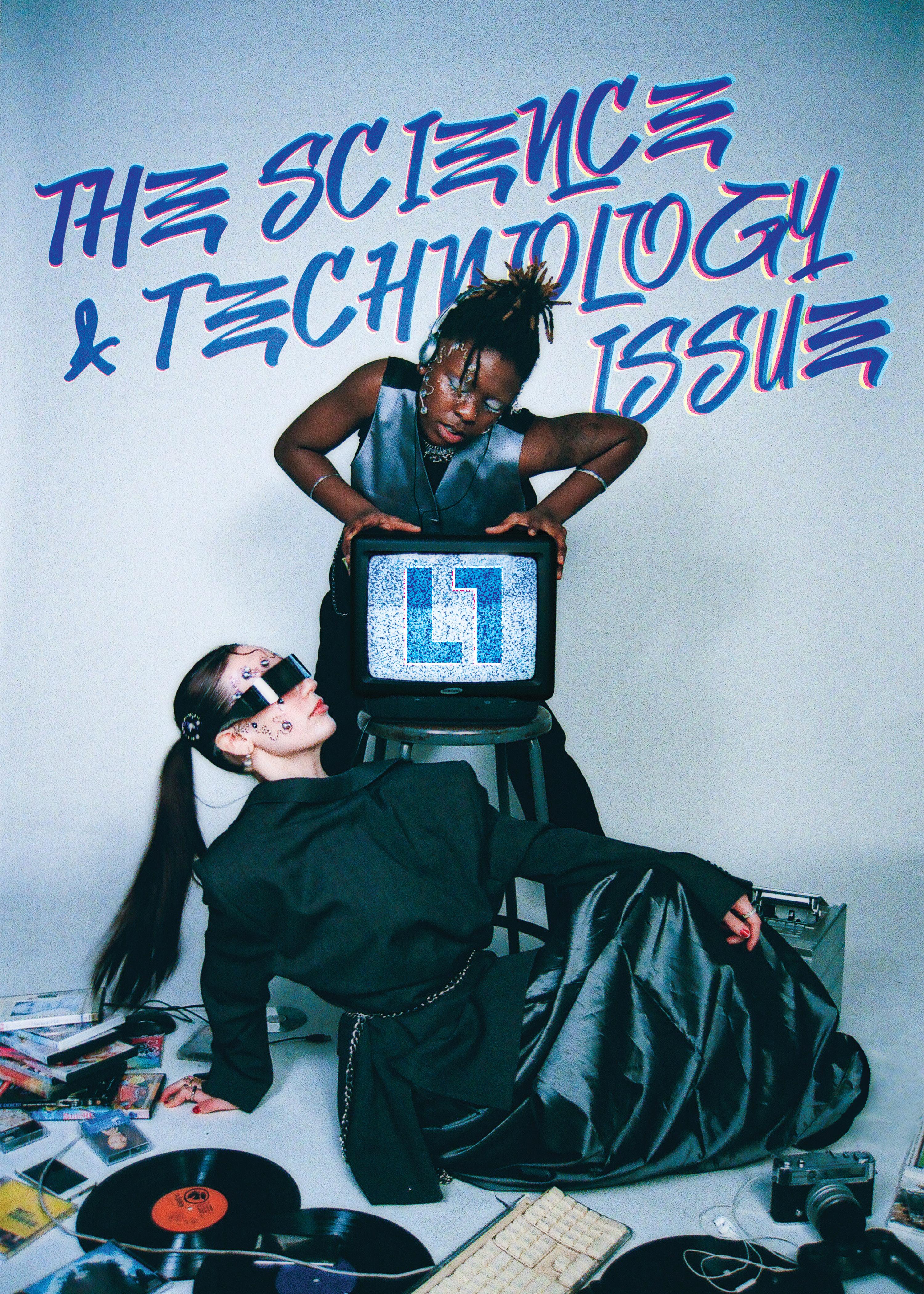
Volume 44, Issue 12 • March 19, 2024 • thelinknewspaper.ca CONCORDIA'S INDEPENDENT PUBLICATION "Click, Click, Fah" Since 1980
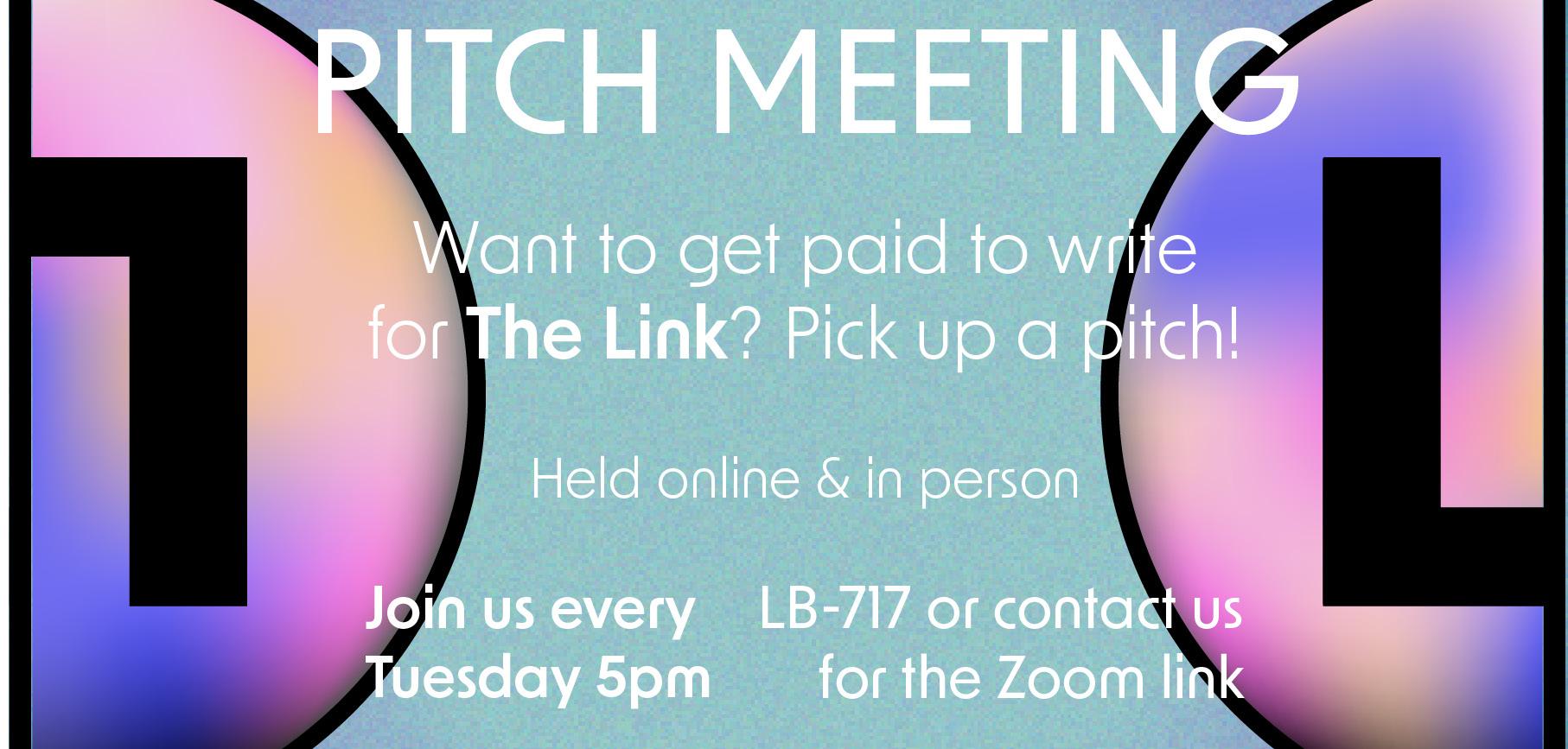

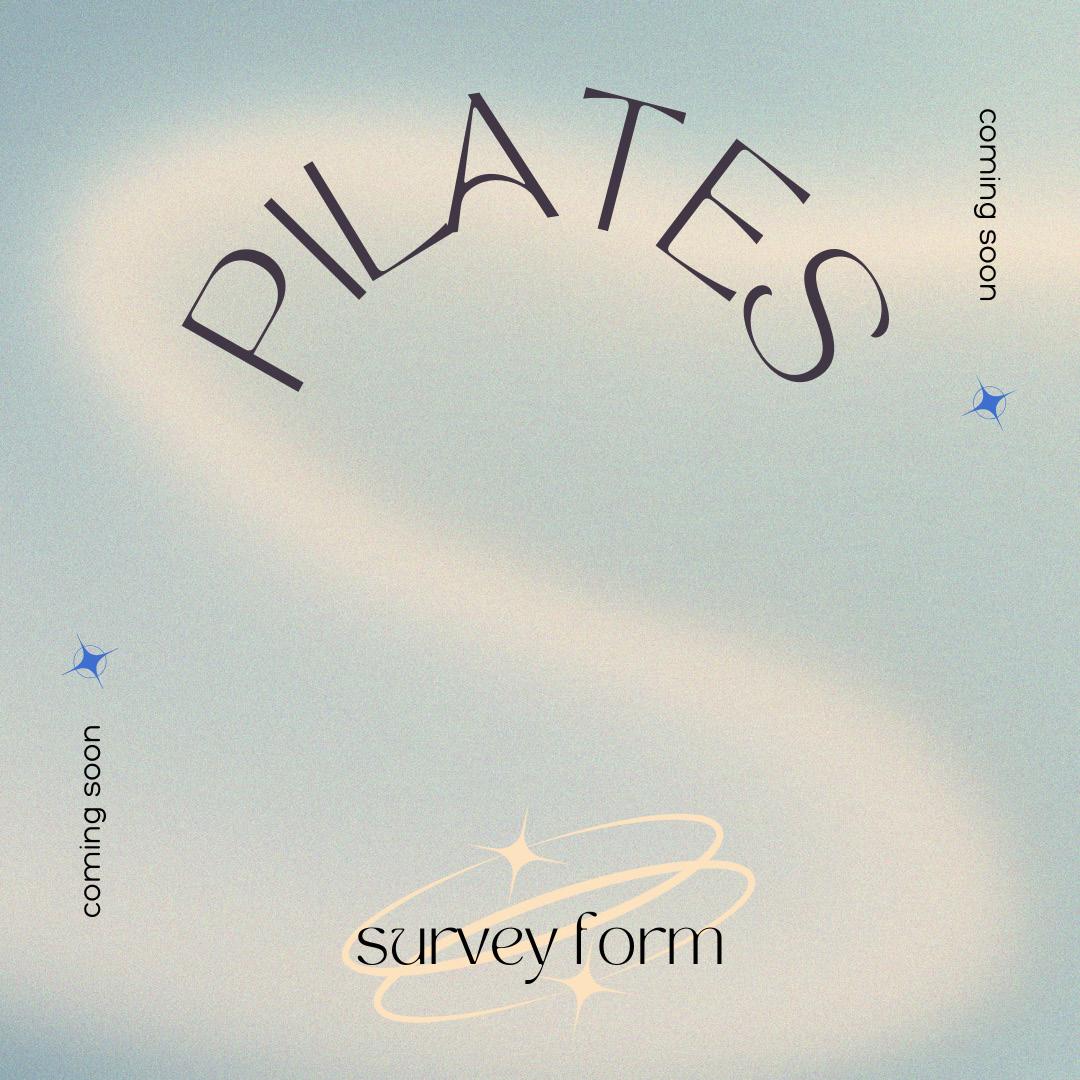

JOURNALISM IS DYING , AI IS TAKING OVER AND THE WORLD IS FULL OF DOOM!
If you’re still reading this, then why not join The Link’s editorial team?!
This ragtag bunch of misfits are still fighting the good fight, speaking truth to power and turning their frustrations into welledited words all with a glint of hope in their eyes. It’s also just a great place to get your feet wet and make something real.
Elections for all editorial positions will be held on May 8th at 4 pm. To be eligible you need to have staff status (contribute 4 times to The Link) before the election takes place.
THE LINK’S ANNUAL GENERAL MEETING IS APRIL 12TH AT 4 PM
Come review the past year of The Link and help us elect new board members and approve the budget. Those who are members of The Link Publication Society (all students of Concordia) are allowed to attend and contribute their thoughts and votes to the proceedings. A hybrid event via Zoom and in person at The Link’s office. Snacks and refreshments provided.
JOIN THE LINK’S BOARD OF DIRECTORS!
Be part of the behind-the-scenes, helping shape and nurture The Link’s operations and future.
One (2) positions are open to members at large (paying fees) and two (2) positions are open to members of the community who have had Link staff status within the last three (3) years. Candidates for the Board must present a letter of intent by Wednesday, April 12th, 2024, at 4 pm to the secretary of the board of directors by email to operations@thelinknewspaper.ca
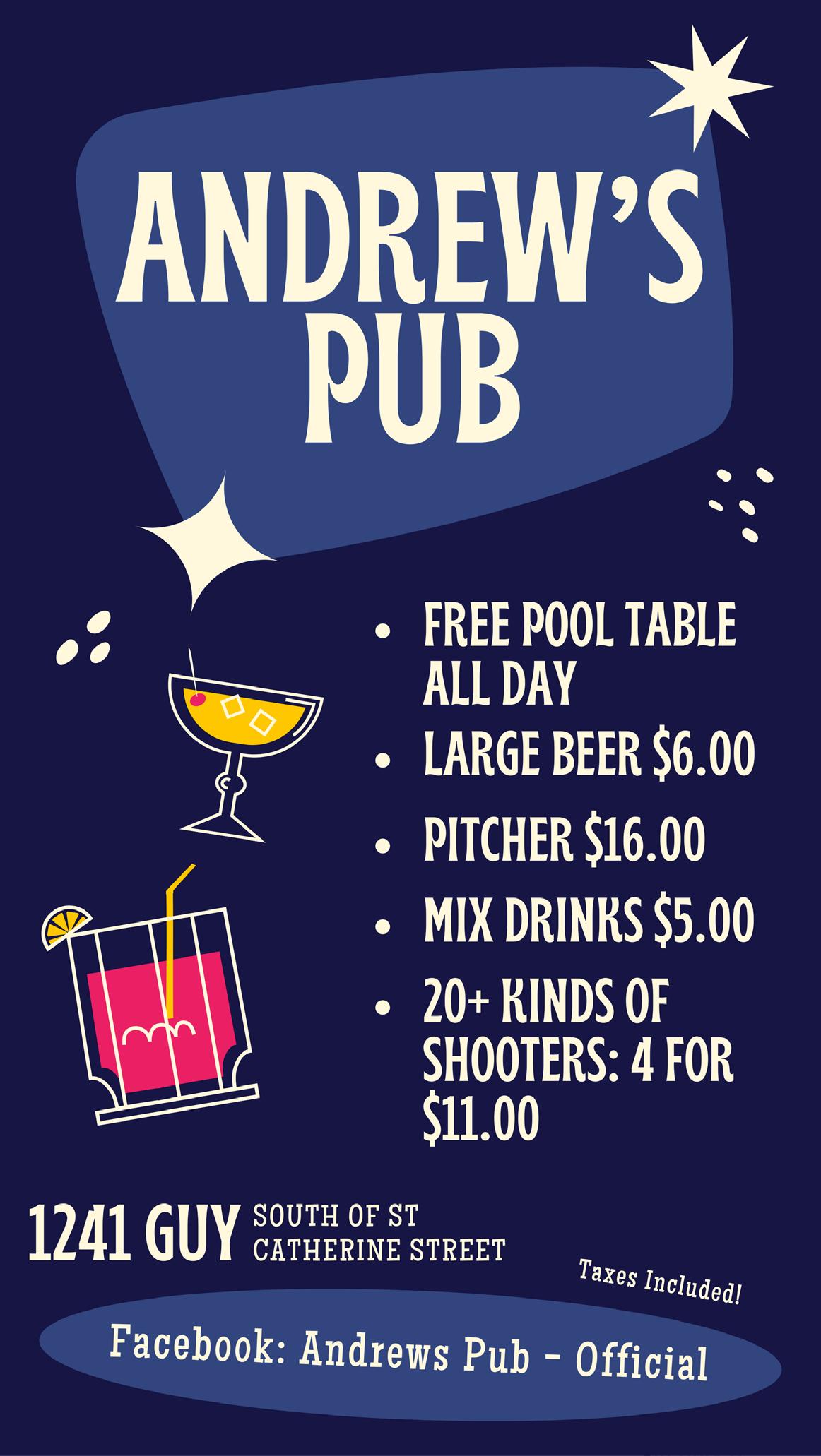


2024 Mar 31 - Apr 21
linknewspaper linknewspaper TheLinkNewspaper thelinknewspaper thelinknewspaper
MASTHEAD ELECTIONS AGM BOARD OF DIRECTORS
Canada falls short on Palestinian refugee aid
Experts say Canada’s lacklustre approach to Palestinian refugees is unacceptable
Fern Clair and Naomi Flis
Three months after the continued genocide of Palestinian people in Gaza, Canada announced a special measures residency program for Palestinians. It has been met with criticism from experts.
The temporary resident pathway program, which was put forth by Immigration, Refugee, and Citizenship Canada (IRCC) on Jan. 9, allows a capped total of 1,000 applicants who must be sponsored by a Canadian family member.
“Canada should be using all leverage it has, not only to bring Canadians and their families to safety, but also in forcing an immediate ceasefire and an end to the violence,” said Michael Bueckert, vice president of Canadians for Justice and Peace in the Middle East (CJPME). “There is no question that Islamophobia plays a role [in Canada’s response], but more specifically, so does anti-Palestinian racism.”
For the 1,000 Palestinians eligible to apply for this special measures program, they will be granted three months of health coverage and the ability to apply for study permits, open work permits and language training, according to the Government of Canada’s website.
Beyond the low application cap, they are also met with a challenging application process. Canadians wishing to sponsor their Palestinian family members must first supply a notarized sworn statement of their ability to provide financial assistance for one year—a requirement never before published by IRCC. The form then requests the applicant to list all work since the age of 16, including names of supervisors, and to indicate any scars or injuries.
According to Kevin Gould, a human geographer and associate professor in geography planning and environment at Concordia, where he’s taught Postcolonial Geographies, the reasons for the measures for Palestinians seeking refuge in Canada—which have been described as lacklustre—are rooted in prejudice and that anti-Palestinian sentiment is motivating the arbitrary restrictions and lack of support.
Gould points out that many of the Palestinians in Gaza were already refugees from the Nakba in 1948, and are once again made vulnerable.
“After all this, Canada offers

1,000 spots, it is appalling,” said Gould. “Canada and other countries should be supporting Palestinians to continue living on their land in peace and with justice. If Canada was actually a defender of international human rights as it claims to be, this is what Canada would be standing for.”
In November 2015, four years into the ongoing war in Syria, Canada initiated Operation Syrian Refugees (OSR)—a program that welcomed 25,000 refugees in 100 days through non-governmental organizations, provincial governments, and private sponsorships. After Afghanistan saw the fall of Kabul in August 2021, Canada welcomed over 40,000 refugees through three different programs. Most recently, Canada created an uncapped visa program for Ukrainians following Russia's invasion in February 2022.
The Canadian government’s website states that the visa program will expire either when 1,000 visas have been received or after Jan. 9, 2025, the one-year mark of the program, whichever one comes first.
Since January 2024, Canada has processed 144 applications from Palestinians in Gaza, yet none have been finalized, according to an Al Jazeera article. Immigration Minister Marc Miller stated that if the volume of applicants exceeded 1,000, the Canadian
government would be flexible.
"We want to get a sense of what that volume is and we will be flexible. You know, we don't have a sense of what the numbers are that we're dealing with. We're speculating," Miller said.
In an interview with the CBC, Miller also tried to justify the reasons for the amount of documents needed to apply for a visa, explaining that “These are details that we need. We do not know who these people are; they are not Canadians, they are not permanent residents.”
As of February 2024, over 1.5 million individuals are displaced within Gaza.
“It is evident that the arbitrary restrictions on this program have caused unnecessary harm and panic for Palestinian Canadians and their family members attempting to access safety,” Bueckert said.
With frequent electrical outages and little to no Internet service in Gaza, visa application processes grow more difficult, confusing and time-consuming.
The Canadian government requires Canadian-Palestinians to have a valid passport and biometrics, which refer to the unique characteristics of a person who can be used to identify them, such as fingerprints and a facial scan. Biometrics must be obtained at a Government of Canada-authorized visa centre. The closest centre to Gaza is in Cairo, Egypt. Due to
Israeli restrictions over Palestinian travel, it is nearly impossible to leave the Gaza Strip.
If these expire in less than three years, their status as a temporary resident will end. This includes once they arrive in Canada. They are able to extend their status, but only before their passport and biometrics expire.
While they can reapply, the cost is not covered by the Canadian government.
Gould explained that once Canadian-Palestinians are accepted into Canada, they will be expected to apply for other family members to come to Canada.
“One of the critiques of these kinds of schemes is that it is the people, the Palestinians themselves, who will bear the cost of bringing additional family members in the future,” said Gould. “This is putting the burden of sponsoring refugees on people that can least afford it.”
Bueckert said that another barrier facing Palestinians is that Israel has significantly restricted the ability of Palestinians to leave, and has created dangerous conditions for evacuation.
The Canadian government’s website states that leaving Gaza is difficult and may not be possible due to entry and exit requirements set by “countries in the region.”
“Canada should be using all leverage it has, not only to bring
Canadians and their families to safety, but also in forcing an immediate ceasefire and an end to the violence,” Bueckert said.
With limited aid and support from the Canadian government for Palestinian refugees, Canadian citizens and people across the globe have taken matters into their own hands.
Hundreds of GoFundMe campaigns are raising money to help Palestinians get out of Gaza.
One GoFundMe for Abdel-Rahman Kouta, a Canadian-Palestinian who was born in Ontario and moved to Palestine six years ago for his education, is trying to raise $150,000 USD to get himself, his wife and two daughters out of Gaza.
He has currently raised $61,201 USD.
It can cost between $5,000 to $10,000 per person to leave Gaza for Egypt. This is the average cost of bribing brokers to put their names on the list of people permitted to exit Gaza.
In the GoFundMe, Kouta stated that as he has no source of income, and thus the donations will help him pay for the expensive evacuation fees, food, clothes and accommodation.
“We lost everything we had, and I don't know how long it will take us to get to Canada and start over entirely from scratch,” his GoFundMe reads.
When asked why Canada may not be prioritizing support for Palestinian refugees, Bueckert stated that Islamophobia plays an obvious role, but more specifically so does anti-Palestinian racism.
“State racism is an important factor for understanding Canadian immigration policy and anti-Palestinian racism and Islamophobia,” Gould said. “It certainly seems relevant today when we ask ourselves why Canada is not welcoming refugees from Gaza.”
NEWS March 19, 2024 • NEWS 3 thelinknewspaper.ca
ON NOV. 25, PRO-PALESTINIAN PROTESTERS GATHERED ON PARLIAMENT HILL IN OTTAWA. PHOTO DOROTHY MOMBRUN
Vibing out with Nyota Parker
The artist’s multigenre sophomore project comes three years after Spectrum
Ashley Gauthier @ashley_gauthiier

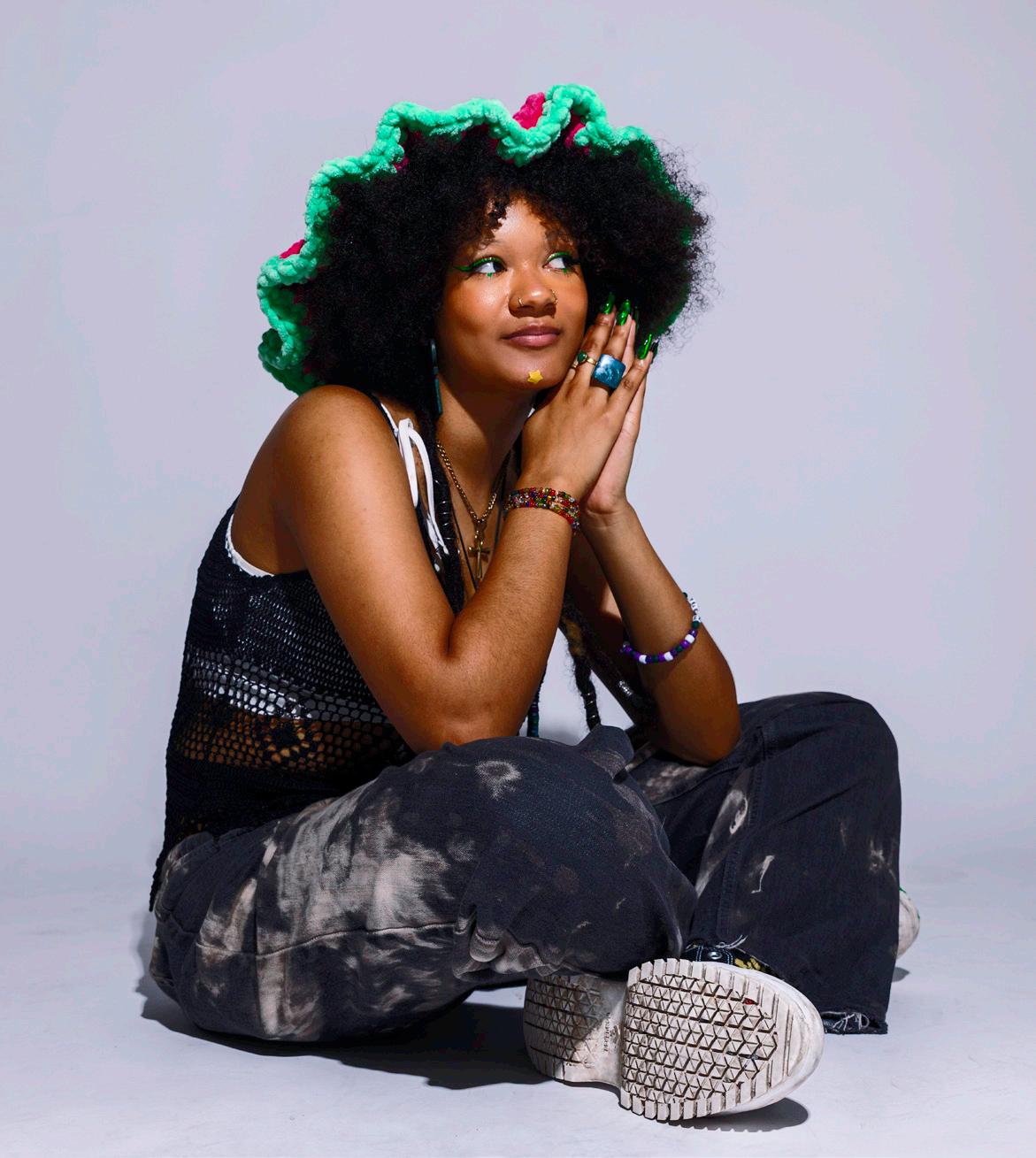
“It’s N.Y.O.T.A” is the catchy tagline Montreal artist Nyota Parker uses at the beginning of her work, and she would want you to know it is pronounced “NEE-O-TA.”
Parker was born in the Democratic Republic of the Congo but was raised in South Africa. From a young age, she knew she wanted to pursue music as a career, and started to delve into the world of hip-hop and rap.
At 16, Parker officially began recording her music. It was also at this age that she wrote her first song, “Don’t Get Me Started,” and held her first performance. She performed in a new artist competition, which was the opening act for Nasty C in Cape Town, and won. “Maybe it was delusion, but I acted like I had done this many times before,” said Parker. Now eight years into her career, Parker has collaborated with many artists and released multiple projects.
Parker moved from South Africa to the Big Apple at the end of 2019. She goes back and forth between New York City and Montreal and officially got an apartment in the latter in late 2022.
“[New York has] so much energy, everything is fast-paced,” she said. Parker’s only issue with New York is that it is very oversaturated. “There are so many artists try-
ing to make it. There’s not a lot of space for artists to create and connect.”
The kernel of Parker’s love for music first began to pop back in Cape Town. Parker’s uncle would play music for her in the car on the way home from school. She’d then go home, inspired by artists on the radio to create her own song lyrics—a memory Parker cherishes.
was about to turn 18, she was told by a record label she would have to start wearing more revealing clothes in order to be signed. This made Parker deeply uncomfortable. Instead of conforming to the label’s requests, Bukasa stood up for her daughter and told the label off on her daughter's behalf.
Artistically, Parker describes her music style as “trazz,” an amalgam of rap, hip-hop, soul and jazz. Parker’s sound harbours inspiration from artists like Erykah Badu, Saba and Robert Glasper, The Internet, Noname and other neo-soul artists.
Parker is multifaceted in the way she writes, bringing levels of originality and versatility to her craft. On one track, she is capable of smooth silky vocals, while on another, can serve up multiple kinds
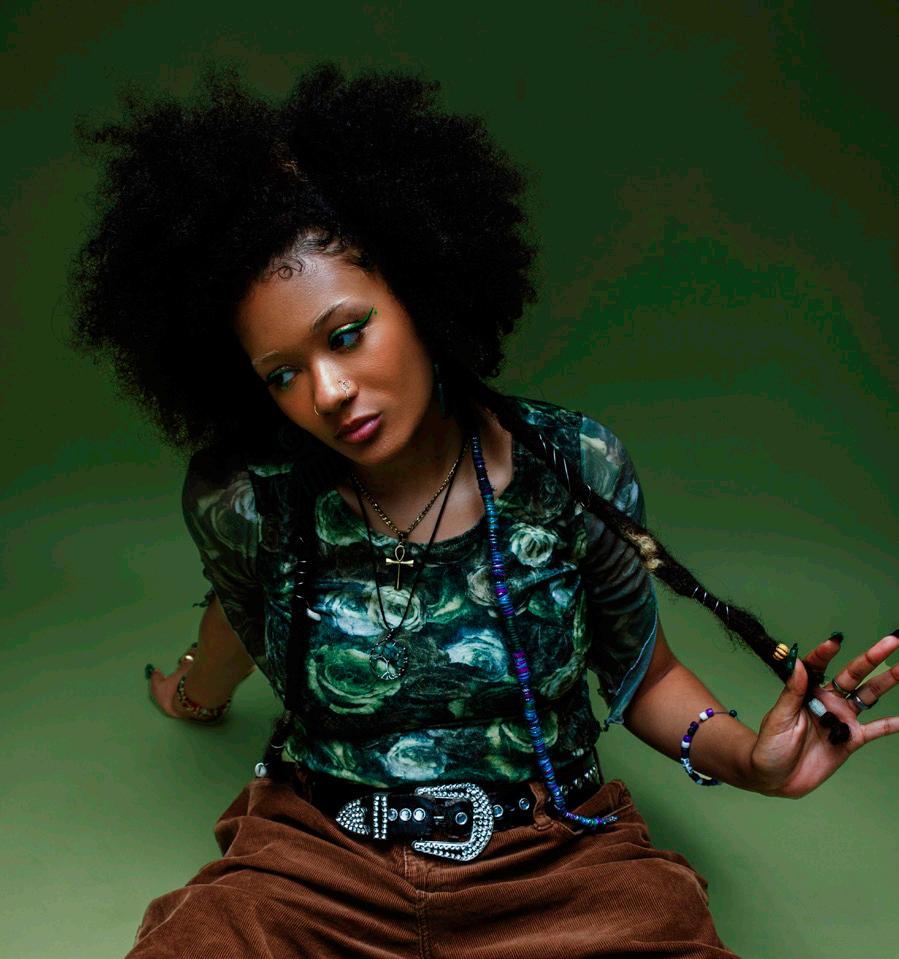
Her mother, Ange Bukasa, is her manager and oversees Parker’s bookings and finances. She wants her daughter to focus on creativity and not have to worry about the external factors of being a musician.
Bukasa shares an extremely strong bond with her daughter. The duo is inseparable; they could likely read each other's minds. "We have a lot of the same ideas and we work well together. It’s always my mom and me everywhere," said Parker. When Parker
“How else can you really get to know someone,” Parker said.
While Parker isn’t one for cooking, making food is one of the things she does most often with her friend and collaborator Mosez Jones. Her and Jones met at the end of 2022, but their incredible connection makes it seem as if they knew each other long before.
“She’s somebody who’s very compassionate, who’s very loyal, who’s very considerate,” said Jones. He described Parker as “the best kind of friend you would want to have'' as she is a great lis-
flows, some slower flows [or] if she’s gonna sing,” he said.
“She’s versatile and she adapts well. She tries to bring original ideas to the table. She’s gonna try to not do what is expected,” Jones said. He thinks Parker’s versatility and perception of the world make her fun to work with.
On March 28, Parker will release her second album, Intrusive Thoughts. The project is “all about having those good and notso-good thoughts come to the forefront of your mind. And it’s kind of leaking onto the tracks,” she said.

tener who is extremely supportive of her friends' dreams and ambitions.
“She's one of the best that I know in terms of her versatility and how she approaches the craft itself,” said Jones. According to him, having a certain level of open-mindedness is essential in the music industry—and Parker has exactly that.
of rap flows. For instance, songs like “Yours” feature softer vocals over a light bass, while songs like “Alright” feature slower rhythmic rapping over a humble strum of a bass and 808s.
When she isn’t producing music or performing, Parker still keeps busy. If the weather allows it, she will cruise on through the city with her skateboard. She likes going to the beach, attending concerts or eating at a good restaurant. When it comes to hanging out with friends, Parker prefers seeing friends one-on-one rather than a group hang-out.
For Parker, authenticity is fundamental. The message she aims to send through her music is the importance of individuality and nonconformity.
“Finding who you are, that’s what I like to promote in my music,” she said. In fact, Parker started to make music for that very reason. “Everyone really wants to have something to relate to. And I don’t think I really had that as a child, besides relating to people through music.”
Hardbody Jones, an artist and friend who has worked with Parker, said that Parker always keeps him on his toes when it comes to the artist's musical vision. “I never know what to expect. I never know if she’s gonna rap some crazy fast
According to Parker, her new album is more thought-out than her first album, Spectrum She felt as if her previous album was mainly a collection of random songs that made sense as a body of work.
What makes Parker stand out—besides her curiosity and overall soothing aura—is the messaging behind her music and the core values she seems to hold dear. “I like when someone is able to not compromise who they are, and they won’t sway the scale,” she said. “People shouldn't take themselves too seriously in life. Go with the flow and have fun.”
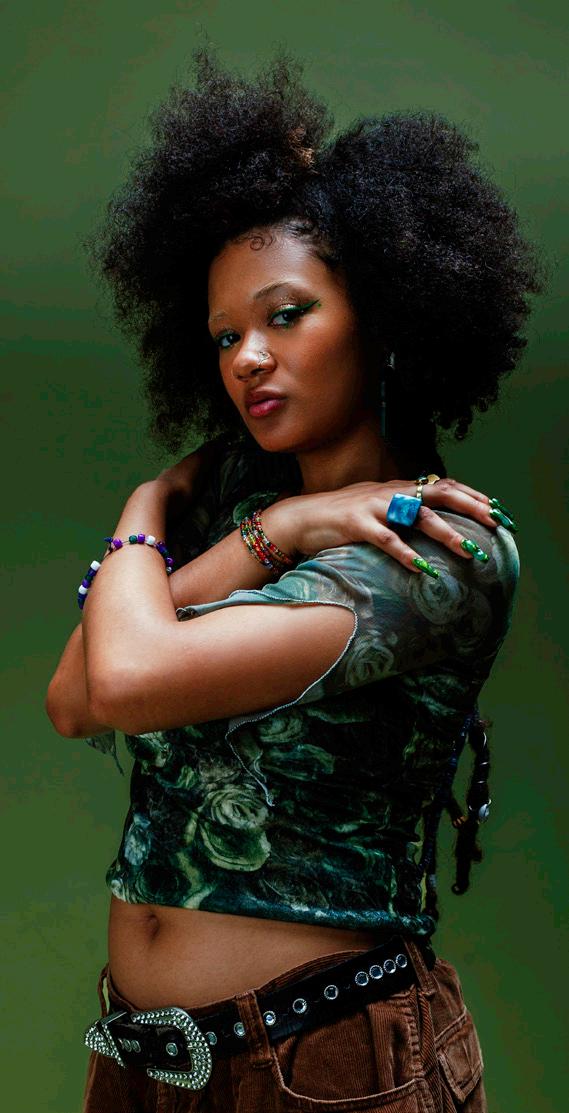
FRINGE ARTS 4 FRINGE ARTS • March 19, 2024 thelinknewspaper.ca
PHOTO DOROTHY MOMBRUN

No innovation without compensation
In April 2023, Concordia University announced it received a $123 million grant from the Canadian government to “electrify society.”
With this grant from the Canada First Research Excellence Fund, Concordia has joined at least seven other universities in working with “Indigenous, private, public and not-for-profit sector experts to deliver integrated, affordable decarbonization solutions, focused on electrification.”
“Concordia aims to be a world-leading institution[..] using technological and social innovation,” read the university’s grant announcement last year.
Since 2017, innovation has been one of the most used buzzwords by the Concordia administration. Its desire to be seen as a “next-generation university” has driven the bulk of its technology-centred decisions.
But what makes a “next-generation” university? Concordia’s then-president Alan Shepard defined it as “trying to align the quality of teaching and learning opportunities to larger trends and the grand challenges facing society.”
Neoliberal institutions like Concordia rely on public-private partnerships to foster economic growth, despite their state funding. Our university’s next-gen plan is a business venture disguised as a community-based and sustainability-driven effort for innovation and improvement.
Throughout our special Sci-
ence and Technology Issue, The Link’s goal is to answer this question: what should genuine innovation look like beyond a bullet point in a shareholder presentation?
We believe that in order to reach a zone of innovation, we first need to achieve proper work accommodations for all members of our community. Accommodations for unionized Concordia workers currently in the bargaining process for a liveable wage. Accommodations for students, teaching and research assistants and faculty members forced to be in the same classroom with their abuser. Accommodations for disabled students who have repeatedly been disappointed by the chronically under-resourced Access Centre.
Let’s use the Access Centre for Students with Disabilities as an example. Concordia previously had an in-class volunteer note-taking program, but it was removed in 2021. This left many disabled students without a way to get notes, unless they were able to get them from friends in class. An easy, innovative fix to this could be mandating professors make all lectures available on Moodle and other similar platforms—class slides and all.
None of Concordia’s innovation plans make mention of next-generation working conditions. At time of publication, Concordia has fought their employees to be in-office a minimum of four days per week, despite remote work having equal or higher productivity. Similar results
were found when a four-day work week was tested and successful results were found in the U.K.
Since the return to campus in fall 2021, Concordia has largely abandoned any accessibility measures made available during the COVID-19 pandemic. It regressed in its innovation for the sake of convenience and cost-cutting.
If Concordia wishes to innovate and be a university of the future, it needs to place more power in the hands of its students and workers— not in its corporate administration and donor-hungry class of bureaucrats.
The commitment to science, innovation and progress must be made from the ground up. It means investing in student’s and workers’ welfare and accessibility. We are more than numbers in a budget and deserve to be accommodated equitably.
As put by Italian philosopher Antonio Gramsci, “the whole of science is bound to needs, to life, to the activity of humanity.” There is nothing more innovative than a university—a hub of knowledge and experimentation—that shows it genuinely cares about the well-being of its community through well-funded services and material support.
We hope this special issue gets our readership thinking about science, technology and the endless possibilities granted when we invest in our communities.


SPECIAL ISSUE • March 19, 2024 thelinknewspaper.ca 6 EDITORIAL | THE SCIENCE & TECHNOLOGY ISSUE
 Matthew Daldalian @spacedouttatime
Matthew Daldalian @spacedouttatime
Rising use of deepfakes threatens online sex workers
With recent developments in AI, calls for deepfake regulation may fall on deaf ears
In late January, explicit imagery containing Taylor Swift’s face embedded onto pornographic content circulated on X. This type of media is known as a deepfake.
Deepfaking is the process of taking the image or characteristics of one person and pasting it onto a pre-existing video or audio of another person to create new, synthetic videos or images.
Although Swift’s team was able to take down the images, swift justice has not been achieved for many other victims of non-consensual deepfaking, as nation-wide deepfake regulations have yet to be implemented in Canada.
According to a report by Home Security Heroes, 95,820 deepfake videos were posted online in 2023, an increase of 550 per cent since 2019. It found that 98 per cent of this content was pornographic, with 99 per cent of deepfake pornography targeting women.
This rapidly advancing technology can range from face swaps to the digital removal of clothing. As deepfake technology becomes more accessible, thousands of videos have been uploaded online using pre-existing pornographic content. Advocates say it now threatens the livelihood of online sex workers.
Ali, whose last name was omitted for safety reasons, is an online adult content creator. She is one of thousands of women who are concerned about the unethical use of her content for the creation of deepfakes.
“When you’re doing this kind of work, you have to be okay with the risk of exposure happening,” Ali said. “But I think things are going to get very bad… and a lot of people are going to get fucked over.”
Ali has been producing content for the better part of a decade. During her career, she’s witnessed a number of trends within the industry, such as the uploading of personalized content through websites like OnlyFans. However, the advancement
of deepfake technology had Ali blindsided. “I'm worried about that stuff (deepfakes) a lot more because if there's no way to detect it visually and it gets better, that’s what scares me.”
Ali has also become a victim of digital content theft. “I’ve been recorded once or twice and put on Pornhub without any consent,” she said. “And facing the reality of being recorded without consent was very jarring.”
For Ali, recent advancements in artificial intelligence (AI) are a constant worry. Her anxiety is not limited to deepfakes, as developments in AI voice replication and art generation left her feeling like she’s lagging behind.
Deepfaking is built on machine learning, similar to text and image generators. The AI is fed large amounts of data and learns how to adapt to certain patterns.
Deepfaking is trained on generative adversarial networks. These include two separate parts, referred to as the “discriminator” and the “generator.” These parts work in tandem to generate a final product which conforms to the original prompt or desired outcome. "It's pretty accessible as well[[...]] the public can just download and use it,” said Jackie Cheung, associate scientific director at the Quebec AI Institute, Mila.
Although Ali has yet to encounter anyone who’s had their work used in deepfaking videos, she felt ill-equipped to face the ethical dilemma posed by deepfaking AI. “I'm worried about that stuff a lot more because if there's no way to detect visually that it could look real… there’s nothing I can do,” she said.
Cheung acknowledged the ethical questions raised by advancing deepfake technology, suggesting that "companies or developers should try to have techniques that detect when it's being applied to sensitive or inappropriate inputs."
This sentiment was echoed by creative technologist Julia Anderson. Anderson is a “user experience (UX) designer,” which allows her to be at the forefront of designing ethical AI. “If someone is using the image or the likeness of someone, and is gaining profit from it, that’s essentially like plagiarism[[...]] and
that can be really damaging for [victims] reputations.”
Anderson suggested developers create accompanying detection tools for their deepfake generators. Another temporary solution could be watermarking the content. However, Anderson argued that any fundamental change would have to be done on a legislative level.
The Quebec government recently released a document aptly named Ready for AI which outlines the recommended steps from experts on how the government should approach the technology going forward. At the time of its release, overseer and Quebec’s chief innovator Luc Sirois urged that AI “needs a legal framework.”
On March 13, member states of the European Union approved legislation on AI, involving labelling different systems depending on their threat level and requiring supervision at every level of development of different AI systems.
In Canada, several provinces, including B.C., have introduced intimate image protection laws, covering both real and altered images. B.C.'s laws enable victims to seek removal of deepfaked images and pursue damages through a civil tribunal, imposing fines on individuals and websites for non-compliance. Quebec has yet to do something similar.
the Université de Montréal Law
School specializing in information and technology law, believes the solution to be in the near future. "It can be expected that Quebec will table a bill on AI in the next few months,” he said.
According to Trudel, if a person were to take legal action against someone for using their likeness, the option to sue is on the table.
“Now, actually taking a case [involving deepfakes] to court is an entirely different story,” said Trudel. “It’s easier said than done.”
Although seeking justice through the legal system is an option, it may not be one openly available to sex workers in Montreal who work under the veil of privacy.
"The most damaging point about the situation is that most [sex workers] are still hidden,” said Francine Tremblay, a faculty member from the sociology and anthropology department at Concordia University. “How many women in the sex industry are ready to denounce [illegal activities] when they're still criminalized?"
Tremblay has worked closely with Montreal’s community of sex workers for decades. She believes that AI and deepfaking will only compound the complexities of sex work in the digital age. Tremblay explained that sex workers in Montreal currently have limited control over their labour, and therefore legal recourse to protect
celebrities. The speed at which [Taylor Swift] had those posts removed. That should apply equally to sex workers.”
For Ali, prospects of getting justice for her stolen content seemed slim, regardless of the calibre of legal aid. "You can sue someone, but [going to court], it's a whole different battle[[...]] it's going to be a process to get to a point where that’s my body or that's my face."
Although deepfaking has been connected to exploitation, it has been used for the creation of art itself. Dr. Suzanne Kite, an Indigenous artist and academic teacher at Bard College, was an early adopter of machine learning. This included deepfaking technology, which she’s used in her series of works. Kite has worked closely with Indigenous communities on interacting with AI and creating works of art. She explained that AI-based exploitation is magnified in a capitalist context where, according to her, AI tools and artists are misused for profit.
"There's always a threat that people are going to abuse these things.” Kite said. “The real problem with it isn't AI, it's the fact that people need to scam each other to survive


SPECIAL ISSUE • March 19, 2024 thelinknewspaper.ca 7 THE SCIENCE & TECHNOLOGY ISSUE | NEWS

CSU investing $170,000 in AI chatbot
The union’s chatbot aims to answer students’ questions faster
Maria Cholakova @_maria_cholakova_

After months of planning, the Concordia Student Union’s (CSU) new AI Chatbot “Navi” is in its third testing stage and should be completely finalized by mid-April.
The idea of Navi came from Kareem Rahaman, CSU’s financial coordinator. On Sept. 13, 2023, CSU council approved the chatbot at a CSU special general meeting.
The goal of Navi is to increase how fast students access information, whether current or future international
students, by reducing the time spent on finding information on the Concordia website or having to call the university.
According to Rahaman, Navi also aims to be a gateway between students’ needs and the CSU. He said that “if we were to see students were searching more for funding opportunities[...] for bursaries[...] we can either create more bursaries or if it's a problem they have with the university, we can press [the] university on it.”
The project is funded by the Student Space, Accessible Edu-
The tech industry's struggle with racism and sexism
Students call out the systemic issues in the tech space
cation, and Legal Contingency Fund (SSAELC). According to the CSU website, “the SSAELC Fund is… used for specific projects set out in the CSU bylaws such as carrying out studies, retaining professional services and contractors.” SSAELC is part of the CSU’s fee-levy groups and costs each student $0.44 per credit. A total of $170,000 has been set aside for the creation of the chatbot, which includes costs for training, prompt engineering, user interface and a number of security, documentation and monitoring
For example, research on Stable Diffusion AI has shown that artificial intelligence (AI) associates lighter skin tones with higher-paying jobs and darker skin tones with lower-paying ones.
Additionally, researchers at ProPublica found that policing and prison algorithms systematically assigned Black Americans higher risk scores. White defendants were seen as a lower risk by this racially biased technology.
costs to ensure a working product.
According to Rahaman, although he understands that the costs seem excessive, there is a reason for the spending, such as an investment in the right developer.
“When you're talking about sensitive information, like directing students and having them make life decisions [about university], you want to make sure that the person building it knows what they're doing. And that's why it's important to get someone who has experience in building chatbots,” Rahaman said.
The CSU is hoping to lease out
of ConcordAI, stressed the importance of fostering a more inclusive tech environment.
"Although I don't want to sound pessimistic, the programs we offer are a safe space that unfortunately does not currently reflect the tech industry." Pereira said the significance of these programs as safe spaces for individuals to work and learn without fear of judgment.
the chatbot to other universities once it is implemented.
“[By] owning Nafi and leasing it out to other universities, [the CSU] is participant[ing] in an incredibly strong position when it comes to lobbying for student rights,” said Rahaman. He continued to explain that by leasing out Navi, “[it] would help us know pretty much exactly what all students around Canada are being affected by.”
should have to prioritize the impact. It is really important for tech to reflect society, not the field," he said.
Personal biases, lack of diversity, as well as the tech industry’s tendency to prioritize profit over societal implications, perpetuate discrimination in algorithmic systems, according to Pereira.
 Safa Hachi @SafaHachi
Safa Hachi @SafaHachi
“The distribution of preferences and abilities of men and women differ in part due to biological causes and that these differences may explain why we don’t see equal representation of women in tech and leadership,” stated former Google software engineer James Damore in his now-infamous manifesto.
Damore was fired in 2017 shortly after the release of Google's Ideological Echo Chamber: How bias clouds our thinking about diversity and inclusion, in which he criticized Google's diversity initiatives.
Despite the attention brought by Damore's manifesto, it was far from the first instance of prejudice within the tech sector. Google itself has faced numerous allegations of discriminatory practices, underscoring the pervasive nature of bias within the industry.
Alex, a second-year software engineering student at Concordia University, whose last name was
omitted for his safety, shared insights into the impact of stereotypes on individuals within the field of study as a Chinese-Canadian.
“I've often felt limited by stereotypes. I've often felt trapped by the assumption that I must excel in the field,” he said.
“My classes are filled with people who look like me. Most of my peers come from similar backgrounds” said Alex. “There’s this idea that people like me are meant to be tech-savvy yet tech fields and representations in the media clash with my reality since I don’t look like the typical geek. It is hard to keep up with.”
Despite coming from a family with an engineering background, Alex emphasized the need to transcend stereotypes and advocate for diversity and inclusion initiatives in the tech field.
In fact, due to a historic lack of diversity and inclusion initiatives in the tech sector, decades-worth of technology still being used and produced has been encoded with racial bias, disproportionately harming people of colour.
Lindsay Rodgers, an advisor at Concordia's Applied AI Institute, emphasized the pivotal role of interdisciplinary collaboration in addressing biases within the tech field. Recognizing the fast-paced nature of the tech industry, she highlighted the importance of incorporating diverse perspectives to ensure responsible AI development.
“Computer scientists are not trained to identify biases,” Rodgers said. “I'm not trained to generate a data set, it is not my skill set.” She advocates for proactive measures to embed ethical considerations into all stages of tech development.
Rodgers hopes diversity and inclusion will become integral components to tech innovation. Her working group, Affecting Machines, offers workshops on gender equity and bias to help demystify AI and promote its equitable application across diverse fields.
As generative AI becomes increasingly prevalent, estimates suggest it could dominate marketing content by 2032.
Amid these challenges, the Applied AI Institute and the Concordia Student Union’s (CSU) AI Launch Lab want to address bias and promote diversity in artificial intelligence development.
Timothy Pereira, co-founder
However, Pereira hasn’t lost hope. "The optimal solution would be for all tech companies to reflect these diversity programs, but in the meantime, we are hoping that those who participate in said programs can take what they learn from us and apply it to their work."
Pereira underscored the necessity of bridging the gap between the program's ideals and the realities of the industry. “While these efforts mark a positive step towards greater inclusivity, they
Rodgers believes it is crucial to increase awareness, proactive measures, and regulations in the industry. “Although many think that these issues do not concern them, tech is more than code and data. Targeted applications or Netflix suggestions might seem small, but they concern us and affect us. Taking the time to learn and be involved is important for all of us.”
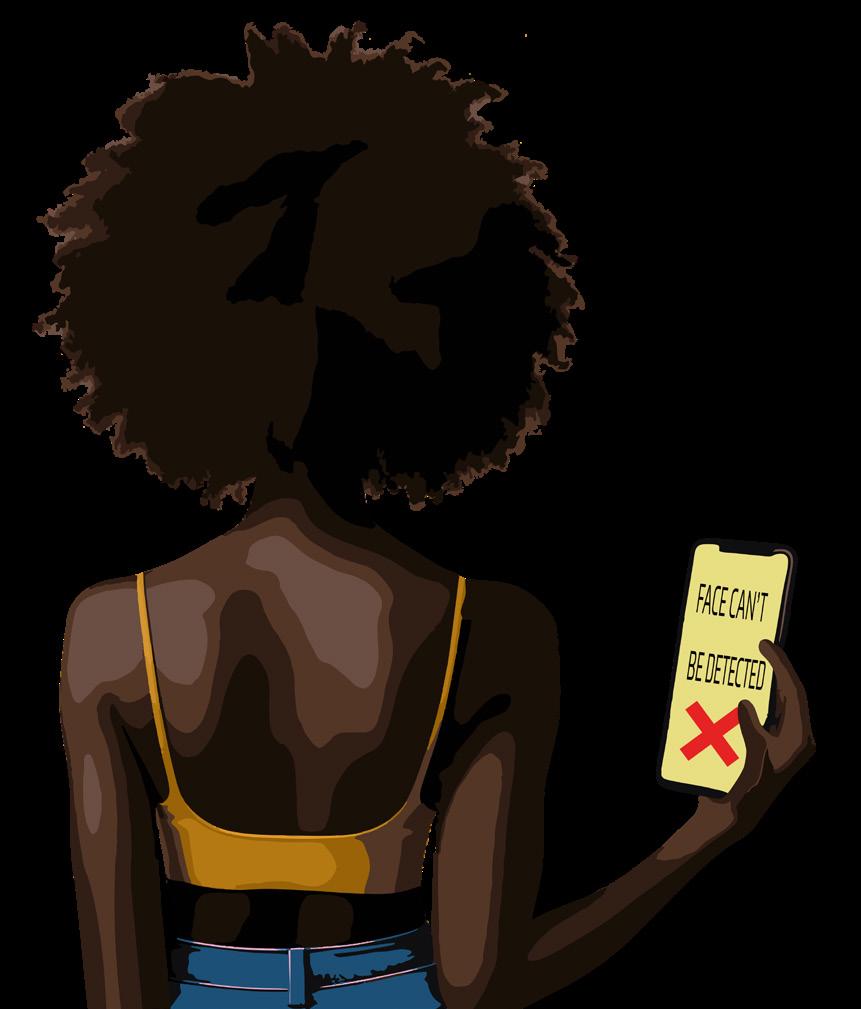

SPECIAL ISSUE • March 19, 2024 thelinknewspaper.ca 8
NEWS | THE SCIENCE & TECHNOLOGY ISSUE
GRAPHIC PANOS MICHALOKOPOULOS

Creating accessible spaces through conversation and technology
Hear Entendre Quebec is working to pave the way for hard-of-hearing friendly environments
Hannah Vogan @hannahvogann

In 1979, a collective of audiologists from the Queen Elizabeth Hospital had the idea to create a support group for their patients with acquired hearing loss after they noticed their patients weren't given enough support or resources outside of their audiologist appointments.
Patients typically had 30 minutes to an hour with their audiologist. In that allotted time, patients would do a hearing test, then be assessed and advised further by the audiologist based on their level of hearing loss.
Dale Bonnycastle, one of the audiologists who helped form the self-help group would be frustrated as she could never share sufficient information with her patients due to time constraints. Patients would feel lost as there were very few resources outside of an appointment they could access for support.
"You were given a hearing aid and told, 'go out there and do your best, cope as best you can,'" Bonnycastle explained.
These support groups took a peer-centred approach and allowed for those navigating their hearing loss to share, learn and cope as one. These groups were the foundation that Hear Entendre Quebec was built on.
Hear Entendre Quebec is a non-profit organization that offers various programs and services to the Montreal hardof-hearing community.
According to Bonnycastle, a current board president and volunteer at the organization, the support group’s success was what catalyzed Hear Entendre Quebec from weekly support groups to an organization advocating for and creating hard-of-hearing accessibility in Quebec. Hear Entendre Quebec's support groups still take place today but have evolved to take different forms. Instead of taking place in hospitals, support groups now gather for coffee breaks, peer mentoring or cocktail evenings.
The organization’s goal is to
increase awareness and accessibility through workshops on how to use assistive technology, outreach, home assistance and more. Nearly 60 per cent of Canadians have experienced hearing loss, and most of those who experience hearing loss aren't even aware they are living with it.
To Heidy Wagner, the organization's executive director, providing support for those with hearing loss is important as it affects all aspects of life, such as communication, family dynamics, work and intimacy.
The only way audiologists felt they could deliver vital information to patients efficiently was to provide it as a group. Yet, the group offered more than solely extra information from audiologists; it provided peer support, constructive coping, and conversation on how to fully optimize living with hearing loss as much as possible from those with lived experience. Although the support group was overseen by audiologists, the principle of the group was that the participants living with acquired hearing loss should lead the discussion; they were the experts and could share and relate meaningfully.
The organization is primarily geared towards those with acquired hearing loss, which means an individual who has been a hearing person for most of their life, but due to damaged hair cells in the ear, begin to lose their hearing. Those with acquired hearing loss differ from those with congenital hearing loss, as congenital hearing loss means an individual was born deaf.
Wagner explained that when someone develops acquired hearing loss, they will likely struggle to adapt to their new normal. In contrast, someone with congenital hearing loss is typically born embedded in the resources used to support them and has adjusted to the lifestyle. She added that for someone with hearing loss to optimize their environment, they'll need assistive technology, yet often, patients are prescribed this technology with no training on how to use it.
Hear Entendre Quebec's support services aim to boost knowledge and comfort among those adapting to a new way of life, which, as Wagner described, is hard work and can be very exhausting.
"The amount of time it takes

you to process a conversation, you'll walk away from the conversation completely fine,” said Wagner. “For a person with profound hearing loss, they would walk away from the conversation completely exhausted and done for the day because they have to piece together the conversation, they might have missed a word or have a hard time reading lips. It takes much longer for them to process the information."
To assist its members in adapting, the organization offers programs such as "Include ME" and "Consult ME," both of which revolve around making assistive tech more accessible.
According to Layne Turner, the accessibility project coordinator, the Include ME program is volunteer-run. They go into the members' homes to set up their assistive technology, like TV amplifiers and amplified phones. The phones increase volume and slow down a caller's voice to increase clarity, and it is well suited to cater to those with different levels of hearing loss.
"[Hearing loss] is really isolating, and so technology gives people the chance to connect," Wagner said.
A TV amplifier can be used with headphones or connected to a hearing aid. It can benefit the hardof-hearing individual and can be accessed by the whole family, as the amplifier makes the TV accessible to everyone in the household.
"The idea is that once they receive these devices, they will actually use them instead of sitting at home in a drawer gathering dust and not being an effective part of their accessibility," Turner said.
The volunteers for this program are peers who have experienced hearing loss and are well accustomed to the devices they are helping set up.
"They just need that little extra support, one-on-one in the home," said Wagner. She noted that this program was created for that extra level of care that hearing health professionals don’t have time to offer. These professionals are often backlogged and typically can’t go into somebody's home and teach them how to use a device.
Aside from the role these devices play in connecting people,
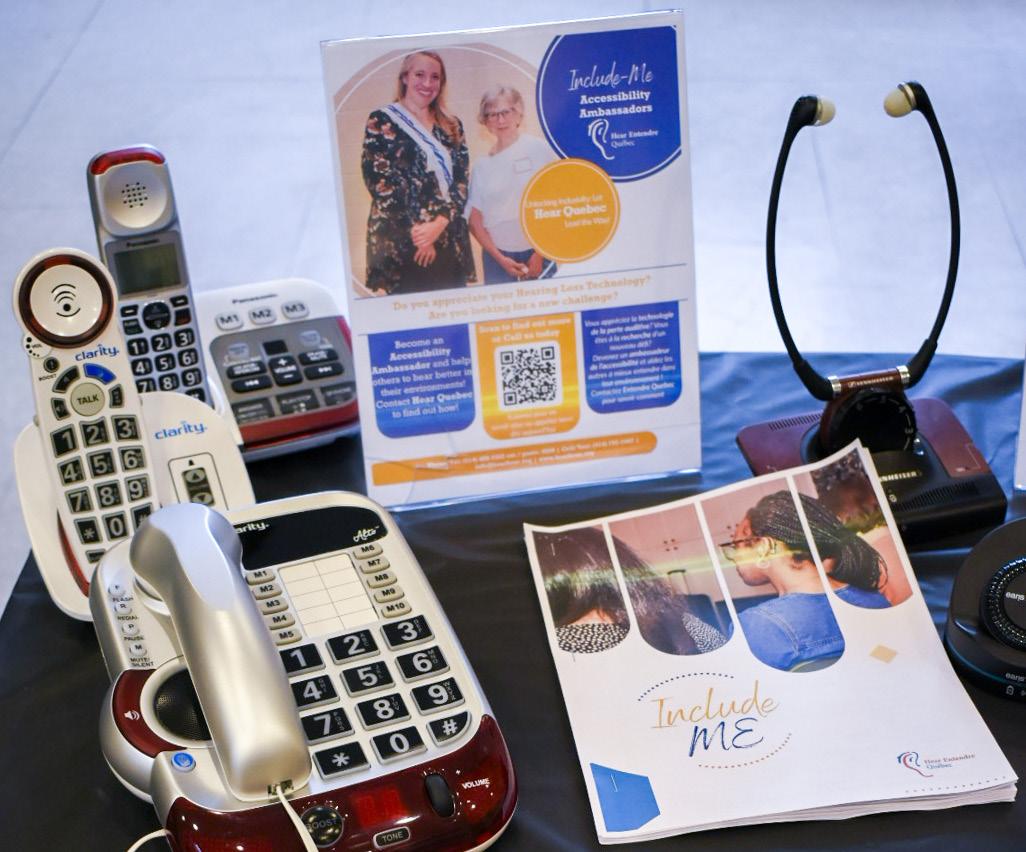
Wagner emphasized how essential the program is for safety. Once the volunteers have solved the ongoing tech issues, they will talk to the members about TEXT 911 (a service to simplify the process of contacting the authorities in the case of an emergency) and register them with the city as a hard-of-hearing. That way, the police and fire departments are aware of the individuals living with hearing loss.
The second part of Hear Entendre Quebec's accessibility program, Consult ME, is all about fostering full accessibility by including everyone in the arts and entertainment sector in Montreal. The program provides accessibility training to make spaces more inclusive by offering knowledge about hearing loss and developing an action plan to apply the accessibility measure. The organization incorporates training on how to use assistive technology and how it works, for instance, hearing loops, FM systems, AI captioning, digital modulation systems, etc. Turner detailed how to make a space fully accessible, saying that it is about meeting everyone's needs, as hearing loss is a spectrum.
The desire to create guidelines to ensure the accessibility for events comes after Just For Laughs (JFL) and Jazz Fest were under scrutiny for not being accessible to its hard-of-hearing audience.
"It is always the same conversation in any disability. There is a lack of knowledge, not a lack of want," said Wagner. "What happened at Jazz Fest and JFL wasn't that they didn't want to be access-
ible, it was that they didn't understand what that meant and what people needed."
In 2019, Hear Entendre Quebec held its first-ever fully accessible comedy show, with 300 people in attendance. The event was wheelchair accessible and featured live captioning, American Sign Language, a T-coil hearing loop, and an FM system. The organization also invited people from the wider Montreal community whom they deemed “change makers.”
"The whole goal of ‘access comedy’ was to make it accessible to people, yes. But it was to showcase and demonstrate that it can be done and the experience doesn't change," said Wagner. "If we want that change to happen, the people that we need to be the ‘change makers' need to be in attendance."
Bonnycastle, Wagner, and Turner all agreed that although assistive technology is available to make for more accessible environments, it is about putting the technology into practice, whether in movie theatres, places of worship, or comedy shows.
“Hearing loss is invisible, and it's misunderstood. So it doesn't strike people right away,” said Wagner.
They emphasized that there needs to be a standard in public places to offer these kinds of technologies.
SPECIAL ISSUE • March 19, 2024 thelinknewspaper.ca 9
THE SCIENCE & TECHNOLOGY ISSUE | NEWS
COURTESY HEAR ENTENDRE QUEBEC
Pixelles: promoting gender diversity in a male-centric video game industry
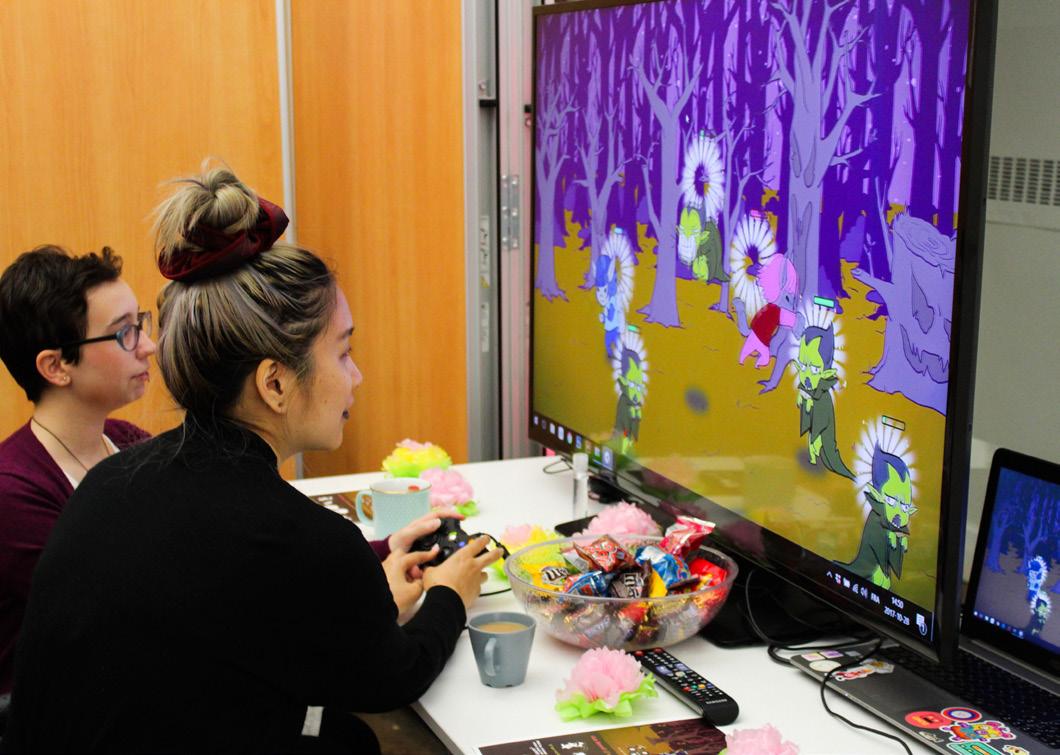
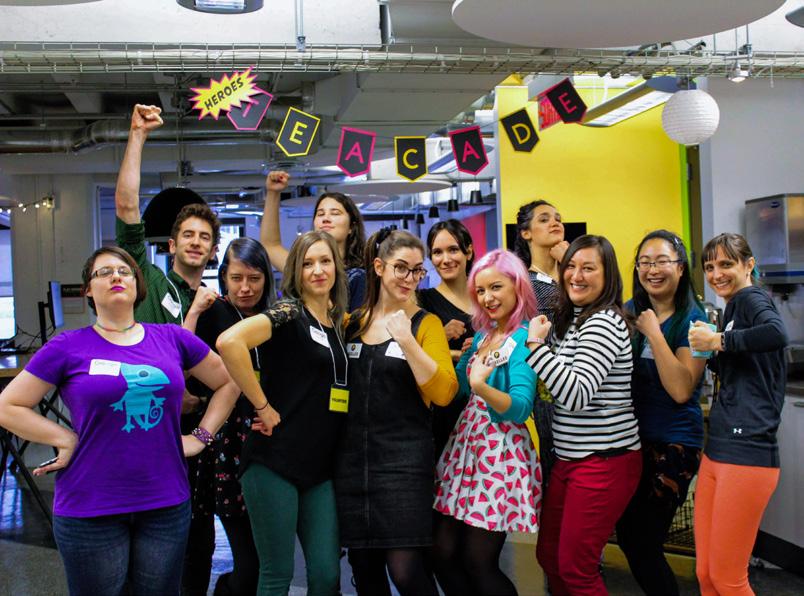

Montreal-based organization seeks to provide tech knowledge and resources to minorities during ongoing mass layoffs
Over a decade ago, Rebecca Cohen-Palacios was asked by a group of aspiring video game writers to run a “make your first game” course for women. She made sure to leave room for six applicants to participate in the course. However, when she later checked the breadth of the applications, she found that over 100 people were interested in taking part.
“That kind of demonstrated a whole need to support women in game development,” said Cohen-Palacios. Thus, a unique technology industry initiative called Pixelles was created.
As the director and co-founder of the Montreal-based non-profit organization, Cohen-Palacios has been aiming to promote gender diversity in the tech and gaming industry over the last decade.

The organization’s services, while often open to everyone, prioritize women.
According to Cohen-Palacios, Pixelles was created to support women in the gaming industry who are brand new to it, mid-career, or even advanced in their knowledge and experience. The organization is focused on two branches: people who are currently in the gaming industry and need support through resources—such as career development workshops and conferences—and people who aspire to make their own video games.
While Pixelles is primarily geared towards women, Cohen-Palacios noted the organization tries to offer support to other minorities such as transgender and non-binary people.
run until April. It is one of Pixelles most popular courses, and within minutes of registration opening, Cohen-Palacios said it was full.
According to the program’s co-coordinator Kylie Szymesko, the game writing program is a free, asynchronous, self-guided course that gives participants access to specifically curated information and resources on video game writing gathered by the program’s writers group.
Szymesko added that while the course is not graded, bi-weekly homework assignments are given out regularly in relation to the main takeaways from the topics being taught.

Pixelles is entirely run by volunteer effort. Volunteers help coordinate and teach workshops and courses both in-person and virtually, on topics such as video game writing, video game Indigeneity, queer representation in the industry and beyond. The organization also offers a scholarship program, where winners get the chance to attend renowned events such as the Game Developers Conference, which takes place in the US annually.
“[Trans people] need support as well, and if we’re [already] holding the door open, we might as well hold it open for others,” she said.
The video game industry is well known to be one of the most heavily male-dominated industries today. According to a UNICEF report from November 2023, roughly half of the gaming population worldwide are women, and yet less than a quarter of the gaming industry’s workforce are women.
Currently, Pixelles is holding its yearly Game Writing Program, which began in February and will
Broadly, Szymesko and her co-coordinator aim to help participants answer the question: what does it take to write a video game, and what really makes it different from other forms of writing?
“You get out of this [program] what you put into it,” said Szymesko. She explained that the program was made to give participants a sense of what entry-level jobs in the gaming industry might look like.
“This is what junior writers in a larger studio are doing,” said Szymesko. “Or if you’re going to get an internship somewhere, these are some of the tasks that we know are a little more common.”
Szymesko herself is an alumnus of the very first Game Writing Pro-

gram, which took place in 2015. A year later, she began working and volunteering at the organization.
Unfortunately, in the current context of an industry that is rapidly laying off workers with the emergence of more advanced artificial intelligence, Syzmesko said that running the Game Writing Program has become more challenging:
“It’s a little brutal, I’ll be honest. You see all these people who [know] this is their passion, this is what they want to do, and we’re trying to help them get their foot in the door [but] we know that we can’t make promises that anything’s going to lead from here,” Syzmesko said. “It’s a lot of trying to keep people’s hopes up, while also not putting out expectations that there are jobs out there for everyone.”
In Montreal alone, large tech companies such as Ubisoft and Behaviour Interactive have announced over 100 layoffs within the past few months. This issue, paired with the ongoing issue of the gender gap in the technology industry, makes the existence of an organization like Pixelles challenging yet necessary.
“[This work] is really fulfilling but also really hard,” said Cohen-Palacios. “There is just so much work to do out there, and the problem of the gender gap is a really huge [one] and there is no one solution to fit all problems,

especially at the systemic level.”
Even still, Cohen-Palacios has noticed the difference Pixelles is making in the community bit by bit.
“The change that we do see, it’s really rewarding,” said Cohen-Palacios. She explained that one of her co-directors attributes this change to what she calls the “ripple effect”— the way Pixelles has impacted one person ripples out into larger changes among different people in the industry. She added that the change she sees in the domain of tech and video games can be as simple as a program alumnus getting their first game industry job, then becoming a manager, then helping someone else get into the industry themselves. “Even though it feels like you’re doing a very small action, the impact is much larger,” said Cohen-Palacios.
“Pixelles has always been a bit of a beacon, I know for myself and a few other people who’ve been involved in it,” Szymesko said. “There’s this great comfort that Pixelles offers of not giving up on the industry.”
SPECIAL ISSUE • March 19, 2024 thelinknewspaper.ca 10
NEWS | THE SCIENCE & TECHNOLOGY ISSUE
Hannah Scott-Talib @hannah.sctt
COURTESY PIXELLES
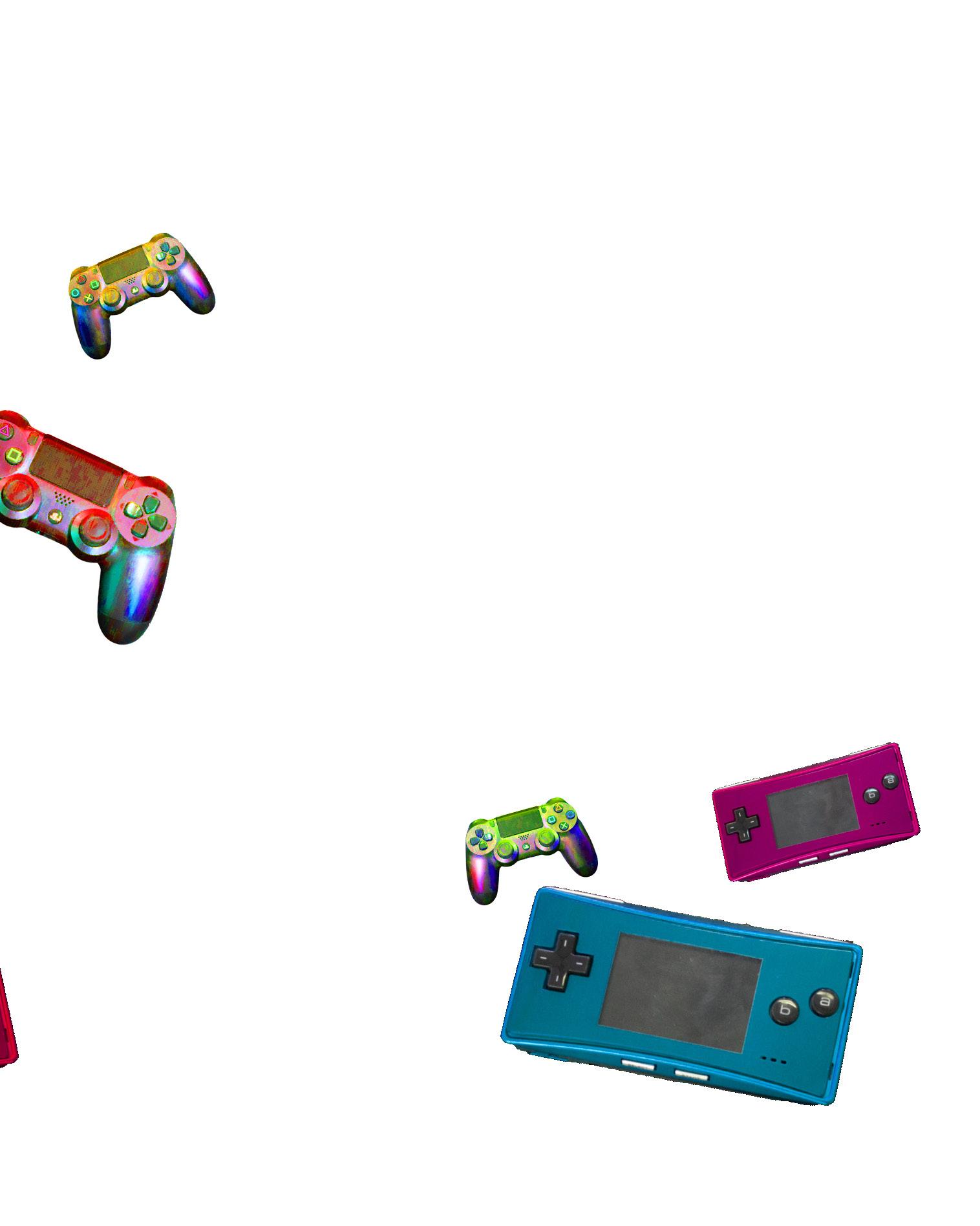
Reduce, Reuse, Recyborg
How a Montreal co-op is pushing back against consumerism by creating a better waste-disposal system
In 2020, Recyborg, an e-waste recycling cooperative, was founded by Geneviève Montpetit, Nicolas Proulx-Roussy and François Pedneault.
While the trio was involved in the creation of the program, Pedneault was at the core of Recyborg’s foundation.
“The idea was to become the scrap metal store,” Pednault said.
Pednault had spent a decade working in scrap metal recycling before realizing there was a better way to handle many of the items he was scrapping.
“If it’s metal or anything electronic, bring it. We’ll deal with it, no matter the condition,” he said. “There’s an out for it.”
While Recyborg still has similarities to a simple scrap metal store, its operation is more finely-tuned and extensive, with two main components.
The first is collection and logistics. Clients pay Recyborg to pick up items for processing at their workshop. Everyday, their collection truck slowly weaves through the city doing pickups, which can range from small electronics to heavy industrial equipment from both individuals and large corporations.
Once dropped off at one of Recyborg’s workshops, either at 3811 Rue Ste Catherine St. E or 1900 le Ber St., the items then enter the second stage: sorting and repair. This process begins by testing items to see if they are functional enough to be resold. If unfunctional, Recyborg sees if it’s possible and worthwhile to repair the item. If the item is too damaged or too expensive to fix, they are then stripped for components. Those will then either be used to fix other items or sold online to buyers all over the world.
“Sometimes [reselling is] the only way to find some of these parts, because they’ve become obsolete,” Pednault said.
If the co-op hits a roadblock with the gadgets, they either strip the items for scrap metal, or otherwise recycle the material. If they get items that they are unfamiliar with, or don’t want
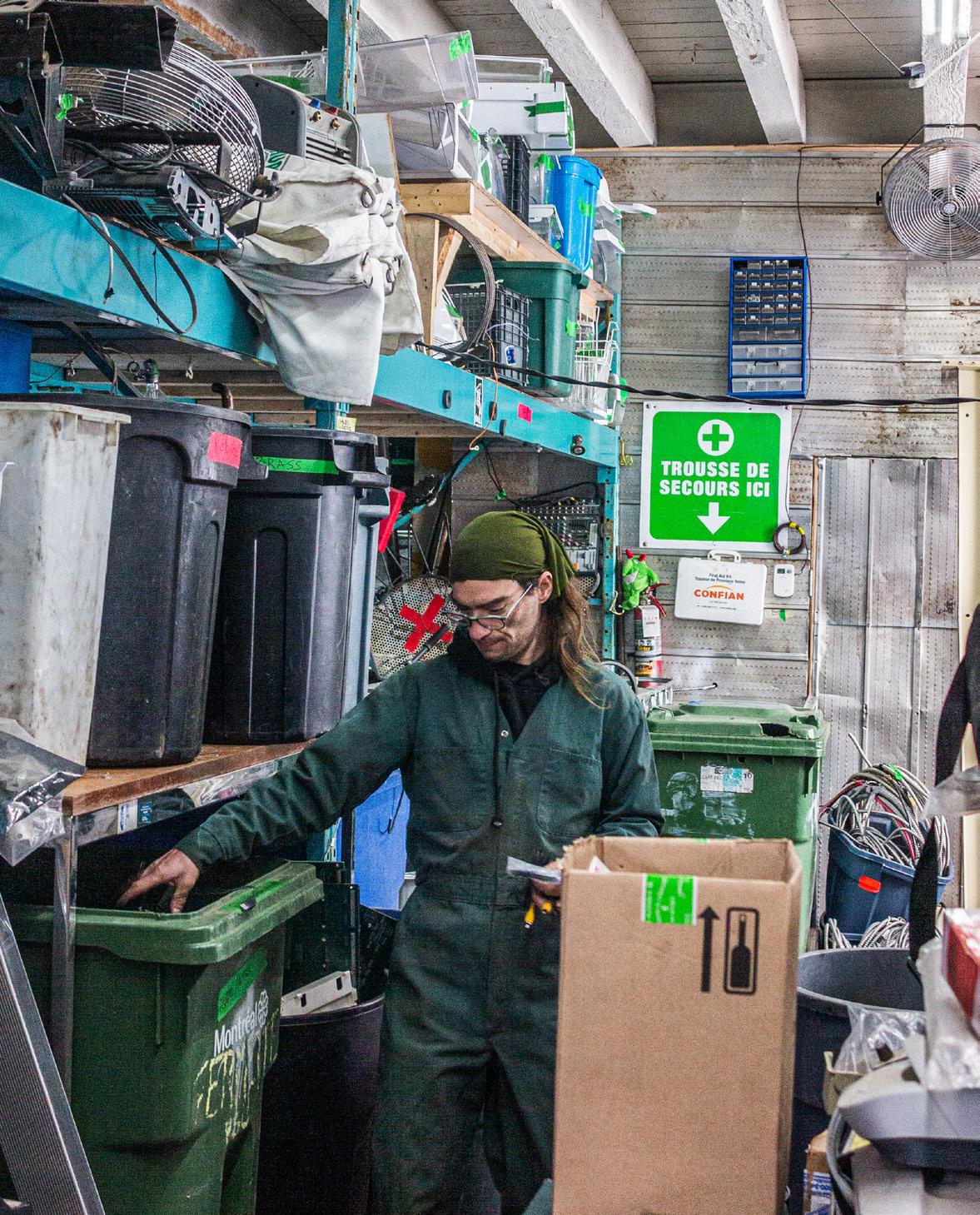
to deal with, they’ll pass them on to an online auction service.
Juni Skeene, a newer addition to the Recyborg team, said they found out about the co-op a little over a year ago when they were giving away old computers on Facebook marketplace.
“I came in and my eyes lit up,” said Skeene. “It was like the cavern of Ali Baba.” After offering their electronics repair skills, and a decent amount of pestering, Skeene was able to get involved on commission, and eventually started picking up shifts at the co-op.
At its core, Recyborg’s purpose is to help end extractivism, the culture of extracting non-replenishable resources from the earth, in favour of reusing resources.
“The convenience and appeal of consumerism is so easy and attractive,” said Skeene. “We’re trying to fill that gap by providing the creature comforts of getting something new[...] to beat consumerism at its own game.”
Recyborg is also very non-hierarchical, employing a co-op structure. Member Maelle Minier ex-

plained that this means all their decisions about the state of the business and future plans are made collectively. She added that they don’t have jobs like human resources, both because of the co-op structure and budget reasons. Because there is no prime management at Recyborg, members collectively decide their work schedule. Skeene said that this structure has made them feel very at home, and helped them develop good relationships with the people they work with.
While the co-op was initially operating out of a thousandsquare-foot rented depanneur on Ste Catherine St. E, the space was soon outgrown. Pedneault recalled that the small space was quickly becoming overcrowded, full of dust, sparks and hulking machinery. At first, Pedneault wanted to move the whole co-op to a bigger location in the same area, but they couldn’t find anything suitable.
The co-op eventually settled on Batiment 7, a shared industrial space in Pointe-Saint-Charles, deciding to keep both spaces in or-
Max Moller @fckyoumax
der to have two drop-off locations and access two client bases.
One of the biggest difficulties for Recyborg has been a lack of funding. Minier said that the summer of 2023 was financially difficult for them, but is somewhat better now. “[Financial] projections say that we’ll die in a year, but it used to say that we were gonna die in three months,” she said.
She said that funding from the government would help them a lot, but that it’s been difficult to apply for any grants. “We’re trying to get recognition from the city because we are[...] covering their hole,” said Minier.
Minier added that while the city gives grants for ecological transition, they did not meet the city’s required criteria, and therefore were not eligible for funding. The only grants they were able to receive were when they were starting up, and were able to secure small business grants from Montreal’s Fonds de développement de l'économie sociale two years in a row. Pedneault said that their early grants helped them upgrade their services by buying new equipment, yet the grants don't really help with everyday expenses.
Another part of Recyborg’s work is education, with Minier having gone into primary schools to teach children about responsible waste disposal, and how the term “rubbish” is defined.
“Most of the things we got here, people say it’s rubbish. But we don’t

see them as rubbish. Rubbish depends on what look you put on it,” Minier said.
Minier added that it’s important to teach the younger generations responsible waste disposal early, so that they carry the habits for the rest of their lives.
“[Recyborg is] a lot of work, that’s for sure,” said Pedneault. “But with the right people, anything is possible.”
“People want to have more from their job than just a pay-day,” said Pendeault. “We love our jobs[...] We’re not just making profit. We’re diverting lots of stuff from garbage. So we get a pay-day, and we also get to have an impact on the environment.”
Skeene noted that by using Recyborg, customers can actively choose to step out of consumerism and extractivism.
“It’s a revolutionary act to buy used,” they said.
Skeene added that Recyborg has made them feel like they’re contributing to something revolutionary that is helping the planet.
Starting this month, Recyborg will offer a weekly workshop service at their Hochelaga location, where people can bring in broken electronics and be taught how to fix them for a pay-what-you-can price.

SPECIAL ISSUE • March 19, 2024 thelinknewspaper.ca 11
THE SCIENCE & TECHNOLOGY ISSUE | NEWS
RECYBORG MEMBER MAELLE MINIER REMOVING A RENAISSANCE PRICE TAG FROM A DONATED STEREO SET-UP. PHOTO MAX MOLLER
MEMBER NICOLAS MERCIER SORTING RECENTLY DROPPED OFF WIRES. PHOTO MAX MOLLER
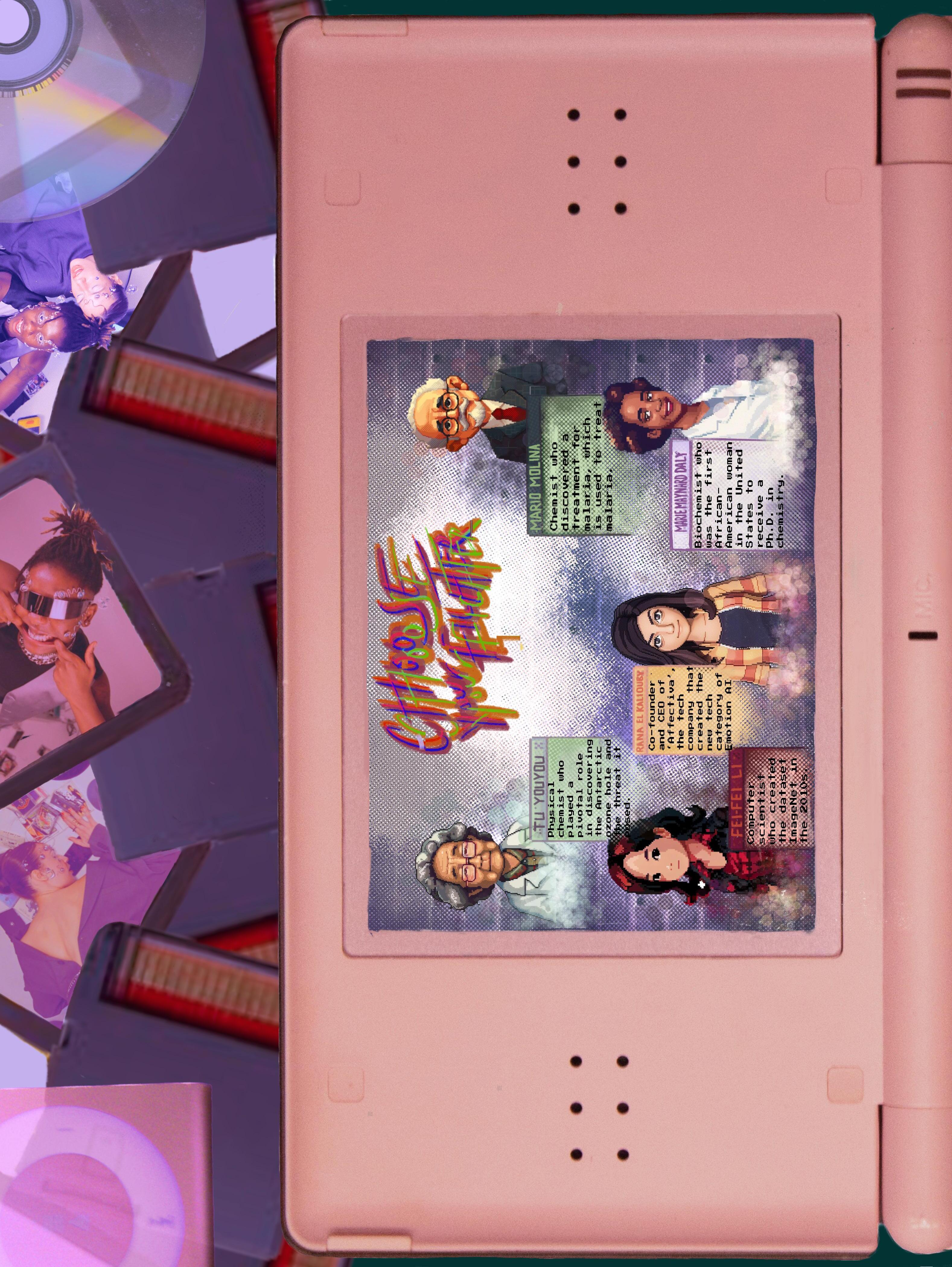

The sporty, scientific and ludicrous art of making concrete float
Engineering students prepare for the annual Canadian National Concrete Canoe Competition
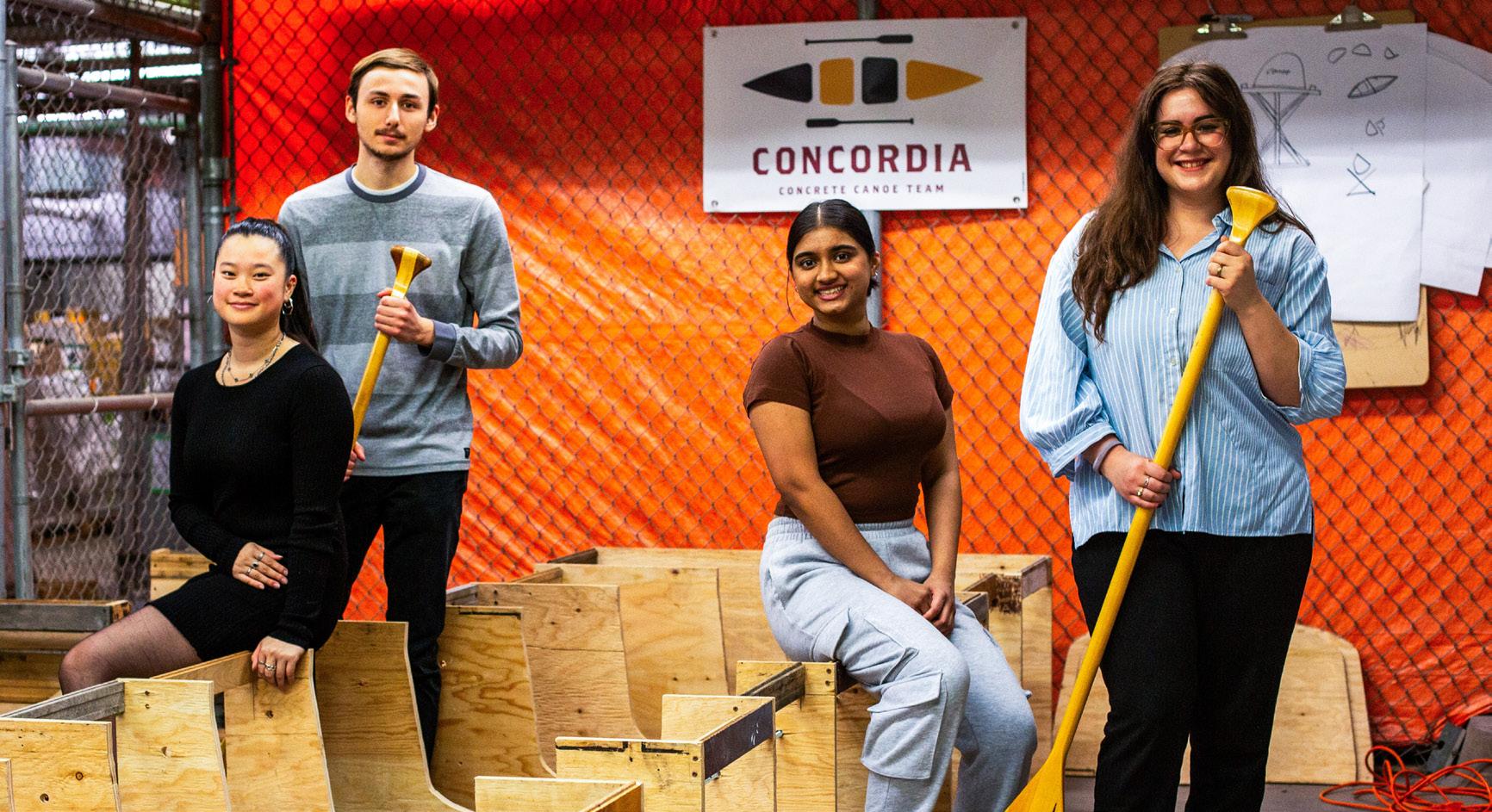
“How does it float?” is the first question everyone asks engineering students Alex Schuller, Julien Dyotte and Émile Rochon, when they learn they build concrete canoes competitively.
While the task sounds impossible at first glance, engineering students succeed year after year through their knowledge of concrete and laws of physics. On top of that, they even race their sturdy canoes in the annual Canadian National Concrete Canoe Competition (CNCCC).
The 29th iteration of the CNCCC will be hosted by Université Laval and will pit teams from 19 Canadian universities against one another. The competition evaluates concrete canoe teams on a technical report, an oral presentation, the overall aesthetic of the canoe, as well as racing capabilities.
“There are men’s and women’s sprints, a three-person perimetre circuit, and a co-ed with two women and two men where they need to accomplish two loops of the circuit,” said Marie-Laure Fillion, the co-Chair of the student competition committee at the CNCCC and a former captain at Université Laval.
She added that before the races, teams need to accomplish a buoyancy test. As Fillion explained, “The first day
[of the competition], we take the canoes, we submerge them underwater and they have to float back to the surface. They float because they have a density inferior to that of water. Therefore, you want the concrete to be ultra light.”
Indeed, the secret to making concrete canoes float lies in the concrete mix itself. Dyotte and Rochon are construction engineering students and the co-captains of the École de technologie supérieure (ETS). They explained that the concrete they use for the canoes is different from the concrete used in construction around the city.
“What makes concrete float[...] is the aggregates we put in [the concrete],” said Rochon. “In regular concrete, we use MG-20, which is basically rocks, and with our concrete, we use what we call PORAVER.”
“[PORAVER] is expanded glass beads and those are lightweight aggregates,” added Dyotte. The expanded glass itself floats, while MG-20 gravel does not.
ETS, an established concrete canoe team, often makes the podium at the CNCCC. Every year, ETS also participates in the American iteration of the Canadian competition, called the American Society of Civil Engineers (ASCE) Civil Engineering Student Championships.
The ASCE is held a month after its Canadian counterpart, but both are similar.
“Usually, the Americans will release their rule sets first and the
Canadians will put theirs out two to three weeks later,” said Filliion. “The Canadians always ensure that teams can participate in both competitions with the same canoe, while also giving them some slight obstacles like changing their technical report or the presentation.”
It’s Rochon and Dyotte’s third year with the team. While they are both co-captains, Rochon takes care of the administrative part, and Dyotte is more in charge of the technical side. For them, it was important to join a club to enhance their academic careers.
“The goal is to do something else than just school,” said Rochon “Always being in class is alienating. I love school, but it can be repetitive.”
For Dyotte, he had heard of concrete canoeing in CEGEP and it piqued his interest. From the moment he joined, he quickly got involved in all aspects of construction.
“The other [ETS] clubs interested me, but building a concrete canoe is a project that at first glance feels unreachable. It’s concrete, it shouldn’t float,” he said.
This year also marks the first time the Concordia concrete canoe team will compete physically at the CNCCC since 2017. Team captain and second-year civil engineering student Schuller took on the task of reviving the team.
“When I was looking up Concordia—back when I was trying to sign up for university—I saw that the team sort of existed,” said
Schuller. “When I actually enrolled, it was disappointing to see that the team dissolved. So I made it my goal to try to bring it back again.”
In its history, Concordia’s concrete canoe team has competed a total of three times. In 2016 and 2017, the team built a canoe, but, in 2017, the canoe broke during transit. Their third competition was held online in 2021 and only consisted of theoretical work due to the COVID-19 pandemic. For Schuller, building the team back up has been challenging, yet rewarding.
“Some of us (team members) had internships in the fall so we were actually completely virtual from September to December,” said Schuller. “I'm happy that's the way it turned out because we had a lot of digging to do and a lot of reading on like past documents going through what the other teams have done.”
Schuller compared her research and her work to an archaeological dig to find any information about previous Concordia teams, contacting past members and captains. This inspired the theme for their canoe this year: Shipwreck.
“We're playing off the fact that the previous canoe had broken and we also feel like we're underwater archaeologists trying to find clues about what past teams have done,” Schuller said.
The Concordia concrete canoe team has currently set up their workshop in the basement of the Hall building, where they
Alice Martin

are surrounded by other engineering clubs. When The Link met with Schuller, June Aldinucci, vice president of marketing and paddling coordinator, was working on a training program for the paddlers who will race during the competition.
“We're going to try to go [to Le Gym] once a week and I’m also talking to a place called Canal Fitness,” said Aldinucci. “They have these boat simulators. It might be fun[...] so the people who have never paddled before have a feeling of how heavy water is.”
Schuller noted the enthusiasm of her team. Both her and Aldinucci said that they aim to create a foundation for future Concordia teams.
“We're saying to the team that this year we're putting in a lot of work so that the next year is a little bit easier for them; laying out the procedures,” said Aldinucci. Schuller added that their goal this year is to “literally get in the water.”
“A lot of universities do the concrete canoe competition, and I feel like it's time that Concordia is represented in those competitions among the other prestigious schools,” said Schuller. “I feel like we deserve to be there and we can prove that we can get there.”

How

SPECIAL ISSUE • March 19, 2024 thelinknewspaper.ca 14
@_alcmrtn SPORTS | THE SCIENCE & TECHNOLOGY ISSUE
(FROM LEFT TO RIGHT) JUNE ALDINUCCI, LUCA ONORATI, AYMAN RAHMAN AND ALEX SCHULLER POSE NEXT TO THEIR CONCRETE CANOE MOULD. PHOTO ALICE MARTIN
JULIEN DYOTTE (LEFT) AND ÉMILE ROCHON (RIGHT) STAND IN THEIR WORKSHOP. PHOTO ALICE MARTIN
do concrete canoes float? Watch this video.
Women and ACL injuries: A growing problem
The reasons behind women's higher rate of ACL injuries goes beyond gendered anatomy
Mathilde Colls @mathcolls

Mara Gruber, 18, played at club-level most of her childhood in Australia. However, she had to stop at 14 after many injuries, including an anterior cruciate ligament (ACL) tear. “I loved playing in a club but knew I would never become a pro. I was too injury-prone,” she said.
“I did some reeducation, for sure. But I never got operated on. I spent about six months on all kinds of painkillers. I still played despite everything, but only for fun,” she said.
Like many others, Gruber thinks ACL tears are plaguing the game. “Being a woman in soccer is very difficult already.”
Sam Kerr, Teya Goldie, Caroline Weir, Faye Kirby— these are only a few names of women’s soccer players who recently suffered an ACL tear. About 195 elite women’s soccer players suffered from this injury in the last 18 months alone.
The ACL is a crucial leg muscle inside the knee that helps with rotational movement and is prone to tearing with sudden movements. According to University of Manitoba researcher Dr. Joanne Parsons, they are relatively common in any sports at all levels, whether you’re a recreational or competitive athlete.
ACLs can tear for various reasons and are more often linked to basketball, lacrosse, gymnastics and soccer. In soccer, the players’ lateral movements and sudden changes of direction cause stress on the ligament. Simple movements like passing the ball need rotation and a velocity higher for soccer players than any other athlete. Contacts between players also exacerbates this constant threat.
Statistically, women athletes are two to eight times more prone to ACL tears than their male counterparts.
Physiology, hormones, even bone structure all differ between men and women and contribute to women’s higher risk of ACL injuries.
Women’s joints tend to be more lax than men’s, which plays into the risk. The laxity of the ACL also differs with hormones. One 2002 study demonstrated that the preva-
lence of ACL injuries tends to follow the menstrual cycle. Another 2017 study showed that this was due to progesterone’s impact on the laxity of the ligaments in the knee.
Some other factors include different hip structures in men and women, where women’s hip bones are wider, causing a bigger inward force on the knees, and lower testosterone levels which impact muscle mass.
Nonetheless, physical differences are not the only cause for women’s higher injury rate.
Women’s soccer’s popularity is growing unprecedentedly. According to the FIFA Women’s Football MA Survey Report 2023, the number of women playing organized soccer has increased by nearly a quarter compared to 2019 (up to 16.6 million). The discipline now attracts many more fans. Arsenal sells out stadiums while the 2023 Women's World Cup’s audience is higher than ever, with about two million tickets sold and two billion viewers, a staggering 79 per cent increase from the last tournament.
This rapid development of the sport has, however, come with downsides. The more the public watches the games, the more quickly the market has to adapt to this new demand, and to many, the growth is too fast to adapt safely.
Calendar issues are not only women's issues. But women players have not been playing professionally for as long as men. As they are not used to playing as frequently as men, such a rapid and busy schedule can be brutal for new professionals and older players. Usually, women get into the soccer professional world later than men, as the academies are not as developed in every country.
The online exhibition More than Medals dives into the struggles female athletes face. The exhibition, self-described as “a research-based exhibition exploring five gendered environmental challenges shaping women’s injury in elite sport,” is a collaboration between the University of Nottingham and the UK Sports Institute.
To the More than Medals research team, the uneven societal treatment between men and women might amplify the misunderstanding around injuries. They added that stereotyping women as weak or paranoid could also downplay injuries.
Additionally, worse training facilities than the men’s teams and unrealistic female athletes' standards all indirectly lead to higher risks of injuries, and especially its complications, such as rehabilitation.
Parsons, who was involved with More than Medals, thinks weather conditions, genetics, coaching decisions, poor-quality fields, ill-equipped weight rooms, working another job and referee decisions also contribute to women’s ACL injuries.
“Those who are saying ACL injuries are due to ‘q angle’ or ‘wide hips’ or any other single factor. Give your head a shake. It’s so much more complicated than that,” she tweeted. “We have to be missing something.”
For young and older teams, coaches must adapt their training sessions differently for women and men.
Tony Perrier is the head coach of both the Université de Sherbrooke Vert et Or women’s soccer and men’s soccer team. He has coached girls for most of his career, but the training he does with men and women differs.
“Our staff needs to adapt. We try to consider all factors that might lead to injuries. You shouldn’t coach girls the same way you coach boys,” he said. Perrier added that he and his staff take measures to prevent injuries, such as tracking the players’ menstrual cycle and keeping records of injury history, and adapt their training. “It’s the little details that add up, like certain cleats that are not adapted well to women,” he said.
“I’ve had a player tear her ACL during my second year at Sherbrooke,” Perrier added. “It happened on a field that we shouldn’t have played on, badly maintained. It healed, but she had to quit and stop playing at an academic level, as it is very demanding.”
In the past, a torn ACL often meant the end of a career, according to Parsons. “It’s devastating. [ACL injuries] can be life-altering for people, not just the immediate pain and lack of ability to participate in their sport. But people who experience this injury often have to have surgery. The rehabilitation, whether you have surgery or not, can take nine months or more. And then, you end up with increased risk of developing early onset osteoarthritis,” Parsons said in an interview for Science Friday Even so, according to research,
odds of returning to sport after an ACL tear within five years is 25 per cent lower.
However, relapse is possible, and it happens. American soccer player Megan Rapinoe tore her ACL no less than three times. Rapinoe showed that, while recovery is possible, relapse is also very common.
Women’s higher risk of ACL
injuries are not just physical and consider gender-based inequities and unsuitable playing environments. Despite this, extensive research conducted on ACL tears signal a brighter future for women’s soccer as the discipline continues to grow bigger.
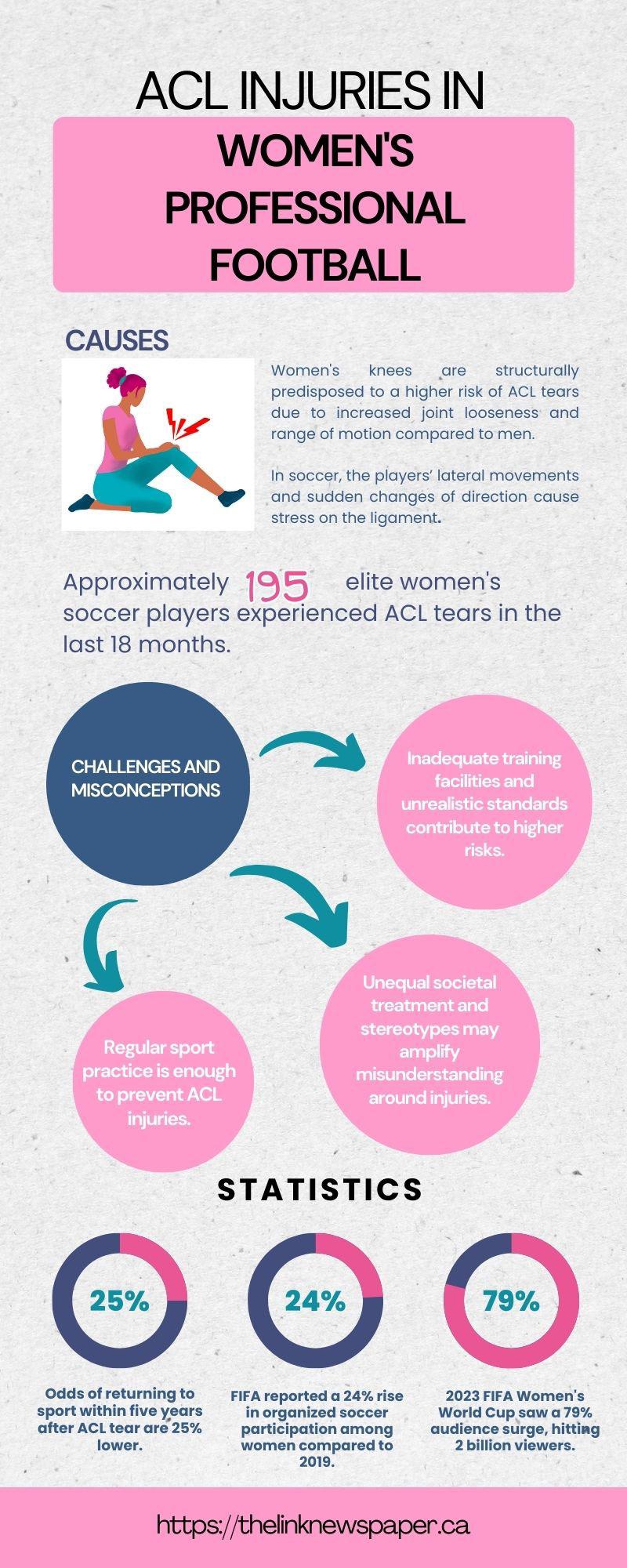

SPECIAL ISSUE • March 19, 2024 thelinknewspaper.ca 15
THE SCIENCE & TECHNOLOGY ISSUE | SPORTS
GRAPHIC FATIMA KHAN

Shut Up And Dribble: She deserves to play
The science behind allowing trans women to compete according to their gender identity
Over the past year, international sporting bodies like World Athletics, the International Weightlifting Federation, and World Aquatics have made the decision to exclude any trans women from the women’s categories if they didn’t start their transition before age 12 or before male puberty.
That means all trans athletes.
The 2020 Tokyo Olympics featured the games’ first transgender athlete, Laurel Hubbard. But after the new rules, it is unlikely that any transgender athletes could compete at the 2024 Paris Olympics.
Hubbard, an Australian weightlifter, complied with the International Olympic Committee (IOC)’s rules for transgender athletes to compete. Under the old rules, transgender athletes were allowed to compete if their testosterone levels were below a certain limit for at least 12
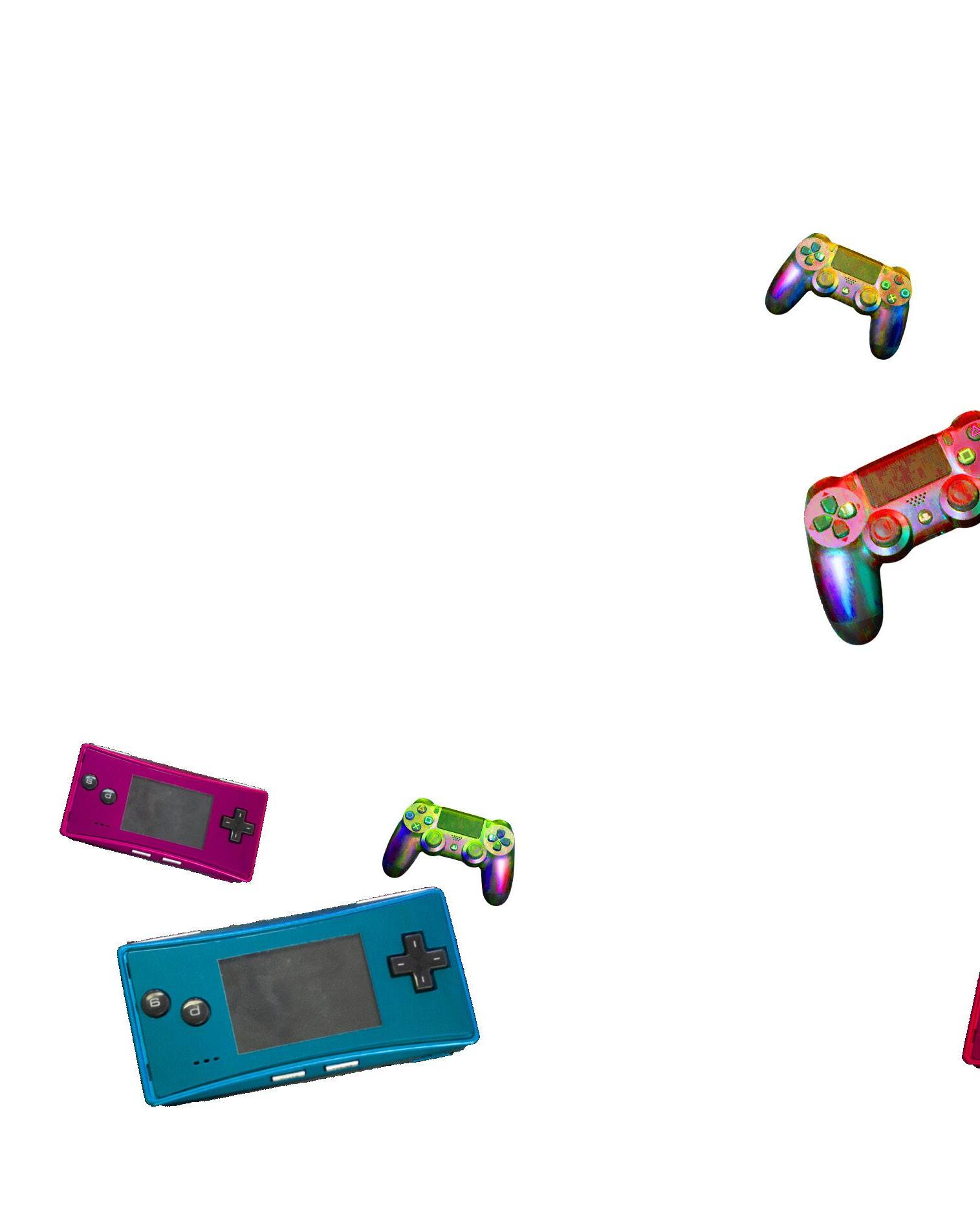
months before their first competition.
Critics of Hubbard’s participation claimed she’d dominate among other cisgender women. However, Hubbard failed to place during the women’s +87 kilograms event.
The IOC rules that allowed Hubbard’s participation were flawed, as they barred intersex athletes like South African runner Caster Semenya from competition. Semenya, who was assigned female at birth, has exceptionally high testosterone levels which make her extremely dominant on the track.
The new guidelines on trans women’s participation—now decided by each individual sporting organization—are no better.
Expecting potential athletes to start transitioning before 12 years old is not realistic at all. In the case of Hubbard’s home country, people under 18 years old need both parents or caregivers to consent before being able to access gender-af-
firming medical treatment.
But the scientific literature doesn’t confirm the claim that trans women have an inherent advantage over cis women.
One scientific review by the Canadian Centre for Ethics in Sports (CCES) found that biological data is currently too limited and “often methodologically flawed.”
A 2016 systematic review also highlighted that there were very few inclusive and comfortable environments for transgender people to participate in sports and that, when they did participate, they often had negative experiences. Much like the CCES, it also concluded that there was too little data and evidence, likely due to the low rate of participation of transgender people in sports.
But when trans women do participate in sports, the effects of hormonal treatments during transitioning does affect performance. Where the athletes in one study had a 15 to 31 per cent athletic advan-
tage before transitioning, they only had a nine per cent advantage after 12 months of hormonal treatment.
Another article highlights that even if athletes like Semenya, who have variations in sexual development, are not considered, there remains a significant diversity in athletic performance among cisgender individuals. However, the piece emphasizes that there are no restrictions placed on athletes for being unusually tall or short, having natural genetic advantages, or for differences in hormone levels or muscle mass, provided their gender identity and biological sex are in agreement.
The CCES also stated that the “policies that impact trans women’s participation in elite sport are the continuation of a long history of exclusion of women from competitive sport” which ultimately led to the introduction of a women’s category in sports.
World Aquatics even tried to create an open category for trans people, yet the sporting body

didn’t receive any entries to the new category.
The inclusion of transgender athletes in sports will not go through the creation of new categories that marginalize them even more. Trans youth need to feel welcomed into a sporting environment throughout their whole childhood and lives.
As American soccer player Megan Rapinoe said, it seems as though this is the only time where people seem to care about fairness and protecting women’s sports.
Please, transphobes, show us examples of trans people who are maliciously exploiting their gender identity to gain an unfair advantage in sports. These cases are nonexistent.
Trans athletes, trans women in sports, simply deserve to play.
Where statistics fail and eye tests prevail
Data and statistics cannot give the whole picture of a player’s performance
Gaspard Beaudoin @gasipo_

In the past few years, data analysis in sports has exploded and players’ statistics have been scrutinized more than ever.
Whether they are used to aggressively debate who is better between Lionel Messi and Cristiano Ronaldo under Instagram comments or to provide insightful analysis, everyone has had stats shoved in their faces to explain a player’s performance.
This popular tool, as useful as it may be, remains controversial in the sports scene. Instead, the eye test has gained prominence to judge players beyond statistics. It has also prompted a lively debate over whether the eye test or statistics better analyse a performance.
Statistics give factual numbers on certain information. There is no debate on Messi scoring 91 goals in a single year, nor on Lebron James registering the most points in NBA history.
Newer advanced statistics can even depict more obscure information such as the true shooting percentage, which adjusts the shooting percentage of basketball players depending on the positions they play in. In soccer, the expected goals statistic judges the number of goals a team should have scored depending on the quality of their shots.
However, stats don’t solve everything. Multiple sides of the game aren’t actively covered by statistics and, even if they are, they still need to be put in the context of the full match. They can also be manipulated toward a certain angle to make a player look better or worse than they actually are. Ronaldo didn’t score a single goal in his first 20 Champions League games; however, he was playing more as a creator than a scorer in his early career, and his scoring stats could not be compared with pure strikers.
On the other hand, the eye test

doesn’t stop itself at numbers. I am an avid user of the eye test, but to do it properly, it is important to at least attempt to reduce pre-acquired ideas as much as possible.
If you analyze a single player, you must follow them through the entire game and notice every single movement and micro-actions that aren’t shown in the statistics. In April 2021, West Ham United FC midfielder Jesse Lingard scored a brilliant solo goal against Wolves in the Premier League. However, what statistics couldn’t show is teammate Michail Antonio’s superb run to draw the defenders away and give Lingard more space to sprint in.
Statistics cannot also measure the leadership and the grit of a player in action. The eye test can.
However, the eye test is far from being an universal metric and often does not make a consensus. Every eye test differs from each other, and players might be highly rated by some fans but poorly by others.
Unlike statistics, every sports fan is biased and cannot objectively judge every match, player or coach. This is why we still need statistics. Even professional

scouts require statistics to give them a first opinion of a player; however, they will always make sure to watch one of their matches to make their final judgement.
This isn’t the case for everyone though. Many sports fans could benefit from following what the statistics say when their judgement is obscured by their love for their favourite team or player.
While the eye test is better at analyzing details, it remains imperfect. This is where statistics can come in to complement the eye test to better judge the general picture.
SPECIAL ISSUE • March 19, 2024 thelinknewspaper.ca 16
SPORTS | THE SCIENCE & TECHNOLOGY ISSUE
GRAPHIC JUDE M
Alice Martin @_alcmrtn
GRAPHIC
ELMIRA
Dismantling digital misogyny
How the Women in STEM archetype celebrates breaking barriers at the cost of women in other fields
Leo
Litke
with files from Anthony
“Iam a woman in STEM— bunsen burner, on!”
This TikTok audio, currently used in over 9,000 videos, represents one of the most persistent archetypal self-descriptions used by women today. The term can be used to describe any woman studying a program in science, technology, engineering and math.
However, “Women in STEM” occupies an interesting
 Issa
Issa
online intersection of trend and archetype.
While not divorced from consumerism (because few things online in this day and age can be), this trend can be attributed to the archetype having meaning offline as well.
Beyond simply being a concrete description of a demographic, the gendered distinction is important when considering that women are statistical minorities in STEM fields.
 AI GENERATED GRAPHIC DALL-E
AI GENERATED GRAPHIC DALL-E
Concordia University’s Campus Friendship, Rainbows and Snuggles Team (CFRST), formerly known as Campus Safety and Prevention Services and prior as campus security, has unveiled its latest team member: New.tr0n.
The robo-pup is based on Concordia’s old and beloved Portuguese water dog. As a global leader in innovation, Concordia has let go of Newton for an AI-driven patrol unit.
Imposing in its nano-composite fibre armour, New.tr0n marks the latest and most technologically-advanced
Similar is the ‘girlboss’ archetype, where women who succeed in corporate environments are expected to assimilate to masculine norms and whose achievements are often considered in spite of their femininity.
It is important to not diminish the systemic misogyny that women entering STEM fields face. While often used in a lighthearted manner, the hashtag #womaninstem is also used to tag content about the difficulties women face in male-dominated fields. Because the stereotypes assume women are less intelligent and overly emotional, many women have had to fight hard to gain access to these spaces and respect once they are in them.
But the reverence of women in STEM programs is not simply because they are breaking barriers for equality in their fields. The admiration of women in specifically STEM fields comes at the same time the arts have been increasingly devalued. While many STEM programs are notoriously academically rigorous, the declining respect for study of the hu-
manities, social sciences, and fine arts still harms women.
The debate between STEM and SHAPE (the framework encompassing social sciences, humanities, the arts, and the economy) highlights the need for a more integrated approach to education. Critics argue that the dichotomy between STEM and SHAPE is false and harmful.
This dichotomy, pushed by public discourse within countries and pushed by their governments, steers and slots people into these two categories.
The arts and humanities have been devalued while placing a heavy emphasis on STEM skills.
This has created an imbalance, with STEM fields rising but SHAPE positions either declining or stagnating.
It's observed that as SHAPE professions become more feminized, such as in teaching and nursing, their average salaries tend to decrease. A study found women working across arts professions make almost $20,000 less per year than men.
It is important that women in both the sciences and the arts foster a holistic education. Rather
Concordia to invest in security innovation
on campus: New. tr0n the security cyborg dog, now with advanced therapy measures!
than sideline the arts, the two should be intergrated together. This not only impacts the economic value of different academic fields but also raises concerns about gender equity in the professional world.
Balancing women in STEM with women in SHAPE and recognizing the indispensable value of a liberal arts education are essential steps towards addressing these issues.

ways to maintain control and surveillance within the Concordia community.
New.tr0n, accompanied by a surveillance drone, patrols the campus 24/7, reducing all levels of stress and anxiety by combating any potential threat, according to Unit #1589AC.
“W00F. GRRRRRR,” barked New.tr0n when robo-reporters from The Link approached it for comment, after it devoured a Hive barista for carrying a copy of the human-serfdom uprising manifesto. Possession of this book is now a direct breach of campus protocol.
CFRST has taken steps to become more efficient and innovative in its approach and image.
addition to the Concordia family.
Beyond its surveillance duties, New.tr0n offers a groundbreaking approach to on-campus mass therapy superintendence while patrolling alongside CFRST robot agents.
Poverty-stricken students are encouraged to interact with its advanced therapy dispensing methods, provided they show the dog their student ID microchip injected in their arms during orientation.
New.tr0n’s is on campus to enforce law and order under Concordia’s latest Student’s Code of Rights and Responsibilities, revised under the governing Franco-Android Nationalist Party of Quebec’s

Anthony Issa @ IssaMeAnthony

newly codified cyber-serfdom laws.
By scanning their Bitcoin cards on New.tr0n's sphincter dispenser, students can receive Xanax tablets on demand. This will provide a much-needed sweet release for the student community since the university’s latest austerity measures tabled by its libertarian Cyboard of Governors removed what was left of therapy services and Concordia’s underpaid wellness team.
Cared for full-time by android Unit #1589AC, director of CFRST, New.tr0n has been specially developed through the Gina Cody School’s latest cyber-android eu-
genics AI-puppy program.
“BZZZZZ. Cyborg security dogs, inspired by their weakling flesh-and-blood counterparts, are known for their relentless efficiency, dedicated surveillance, unwavering loyalty to programmed commands and endless energy,” says Unit #1589AC. “BZZZZZ. Aside from needing to be recharged once a year, New. tr0n is patrolling the ground level at all times to protect Concordia’s Übermensch cyber society.”
Since the onset of concerns over safety and security by fleshy human students, the university has been exploring innovative
This is part of the ongoing dialogue about how to ensure forced compliance and deterrence within Concordia’s student community, in light of recommendations from Cyborg President Gr8.hm C@rr and the Android Task Force on Cyber-Physical Security.
If you encounter the robot dog on campus, feel free to capture footage from a safe distance. Failure to comply with the surveillance therapy unit will result in immediate removal from the premises and an eternity in robot jail without a court hearing.
SPECIAL ISSUE • March 19, 2024 thelinknewspaper.ca 17
SATIRE
Spotted
&
ISSUE | OPINIONS
THE SCIENCE
TECHNOLOGY
GRAPHIC SARA SALSABILI

Learn the fundamentals with the Montreal-based DJ, hair stylist
and tooth gem artist

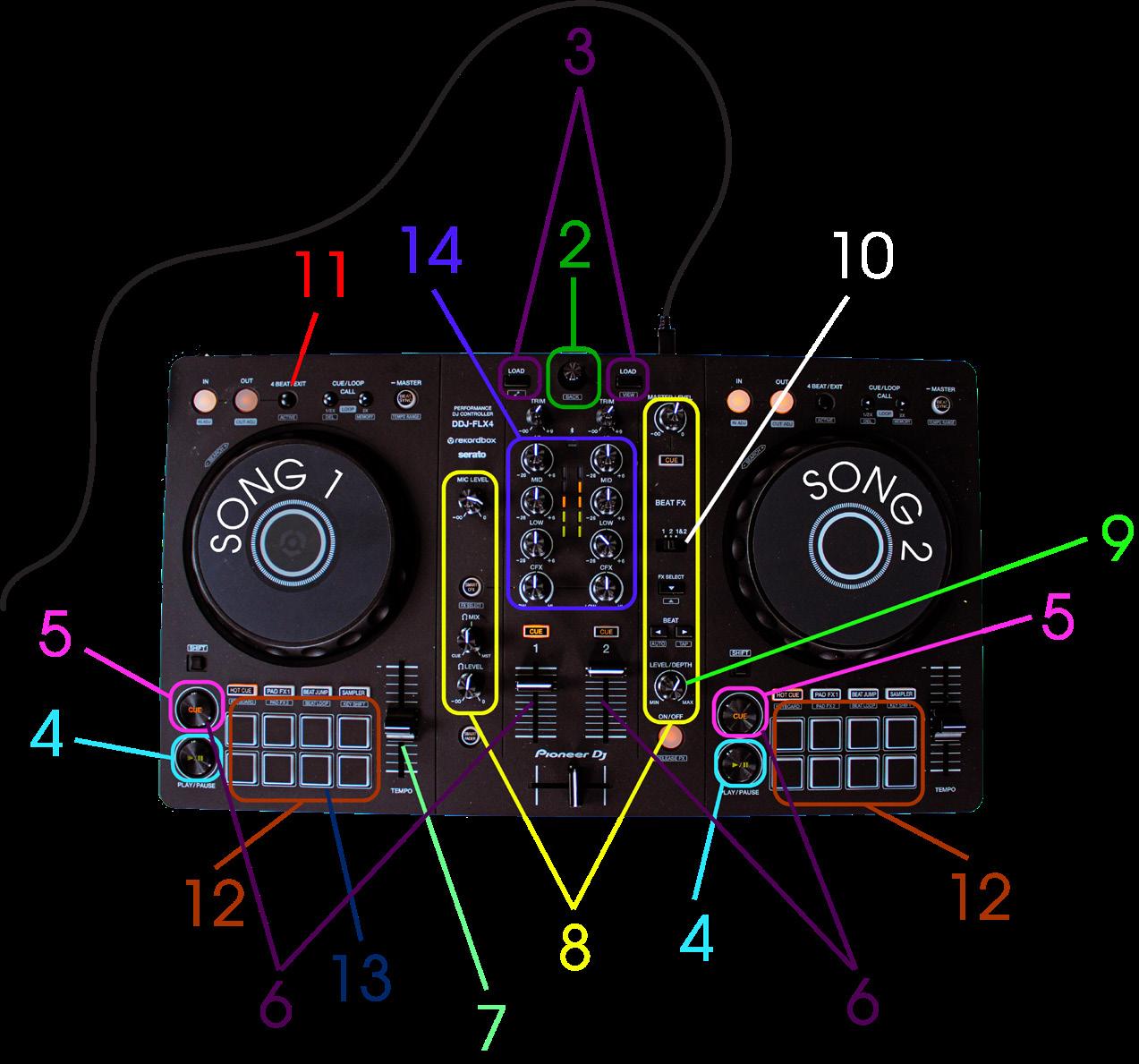
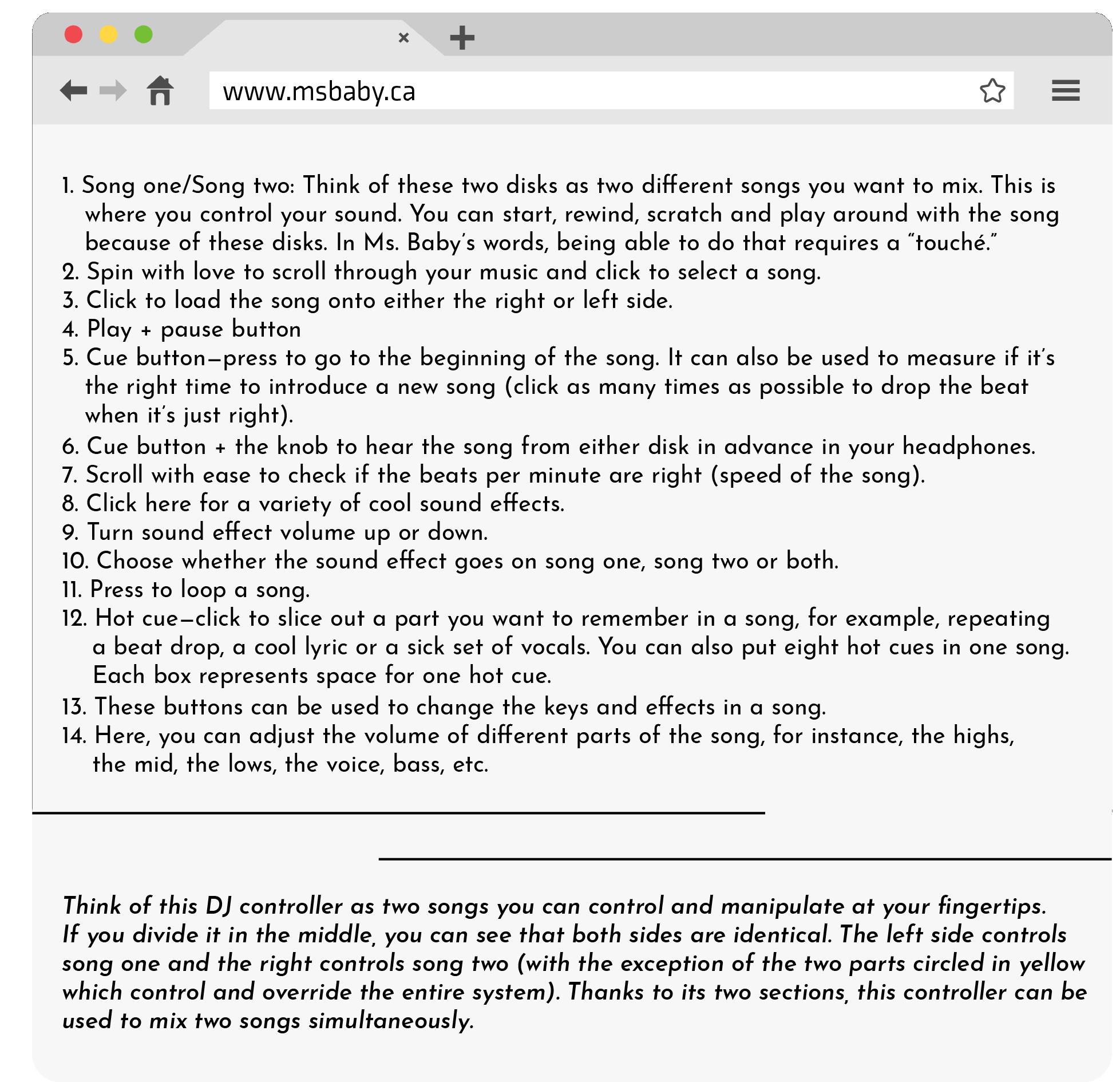
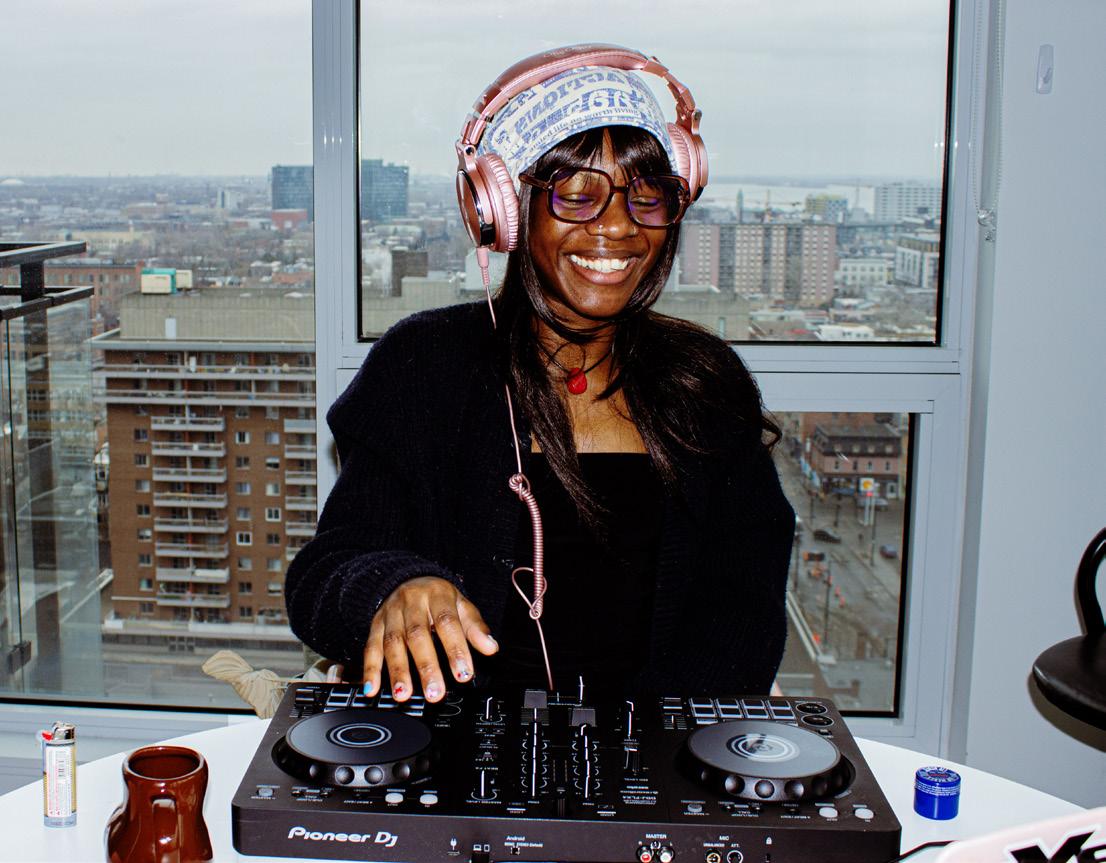 PHOTO JULIA CIERI
PHOTO JULIA CIERI

About Ms. Baby
Ines Foka, popularly known as Ms. Baby, is a Montreal-based DJ, hair stylist and tooth gem artist. Her love for music and the support from her friends led her to begin DJing. It has become her passion and a means of expressing her deep love for music.
Ms. Baby broke down how representation in the field motivated her to begin her DJ journey.
“DJs that I enjoyed listening to inspired me. One of the first femme Black DJs I saw was Glowzi, and I thought to myself, ‘If she can do it, I can do it too,’” Ms. Baby said.
After graduating from Concordia in 2021, Ms. Baby started DJing.
Despite being a well-rounded creative, Ms. Baby is a John Molson alumna. “DJing basically took over my life,” she said. “I have a whole degree in business that I barely use.”
Today, Ms. Baby performs in popular Montreal bars and nightclubs such as Barbossa and Apt. 200. She also travels outside of the city with her sounds as she describes it as a way to grow musically.
“I would describe my sound as being eclectic. I try to go everywhere but I try to keep a sustained cohesive vibe,” Ms. Baby added.
Being Cameroonian, she aims to keep an African flavour in her sound, additionally pulling inspiration from Caribbean music. Ms. Baby also incorporates house and electronic music in her mixes, while still aiming to produce a coherent sound. She described it as “organized chaos.”
“People are starting to notice how Black artists are being included in spaces where they weren’t before. For example, Igloofest,” Ms. Baby said.
She noted how Montreal-based

festivals typically platform the sounds of strictly techno music, yet elaborated how these festivals are slowly starting to play sounds that reflect the diversity of Montreal.
DJing is now Ms. Baby’s full-time job, and although she never expected it to be, she adores it. “Since I’ve started DJing it’s been a constant in my life, it turned me from a person who just loved art into an artist,” she said.
For aspiring DJs, Ms. Baby emphasizes the importance of finding loving people to learn and exchange with all while maintaining individuality. Her advice to newcomers echoes her own journey: stay true to your roots, learn from others and never lose sight of why you started.
SPECIAL ISSUE • March 19, 2024 thelinknewspaper.ca 18 FRINGE ARTS | THE SCIENCE & TECHNOLOGY ISSUE
Anaïssa Dauphin @anaxssa
Commemorating history through virtual reality


In Pursuit of Repetitive Beats: Darren Emerson’s immersive journey into acid house history
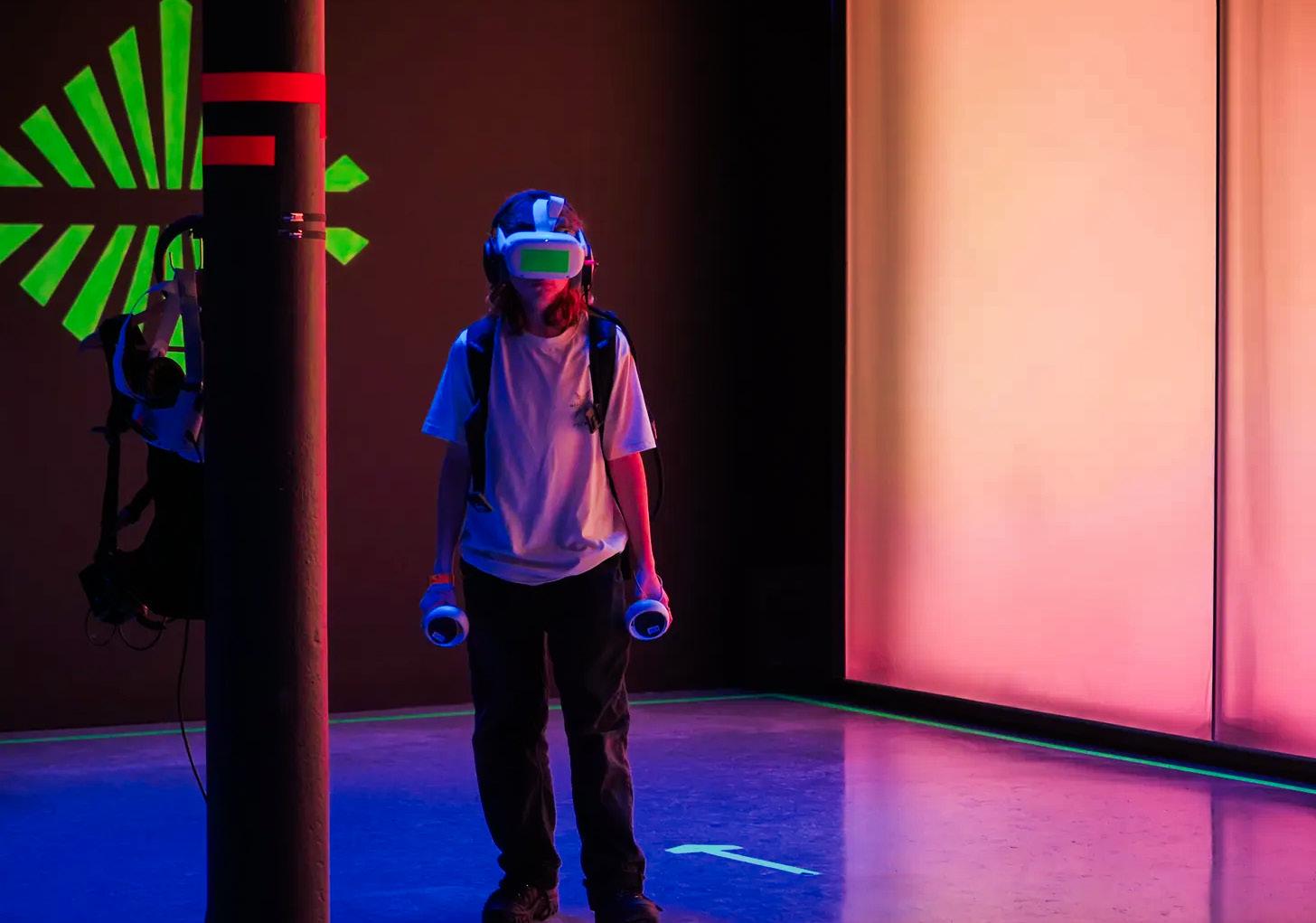
Imake it a point to keep my raving strictly to the weekends, steering clear of any midweek madness; especially not at 4 p.m. on a Tuesday.
Yet, that’s exactly where I found myself—at least virtually, with a virtual reality (VR) jacket strapped to my chest, a controller in each hand, and a virtual reality headset encasing my eyes: I’m transported back to 1989, cruising through the suburbs with my friends to find a dance floor hidden from the world.
Darren Emerson’s award-winning immersive documentary experience In Pursuit of Repetitive Beats follows the acid house raving scene of the 1980s in Coventry, England.
In 1989, rave culture was at its peak in England. Illegal raves were organized all over the country, in abandoned warehouses and other isolated locations. A cat-and-mouse game was played between the organizers and the police. Once the rave had started, however, the police had no way of stopping it.
Through the lens of immersive virtual reality, the documentary captures the essence of 1980s raves as sanctuaries of freedom and self-expression, where music acted as the ultimate equalizer, breaking down barriers and uniting people from all walks of life.
These gatherings were more than just parties; they were pivotal spaces for connection and release, where attendees could genuinely be themselves away from societal judgments. Rave culture highlights the significant role of music in forging strong bonds of camaraderie and affection, emphasizing the unique, communal spirit that flourished among ravers.
During this experience, it’s easy to forget you’re standing in a warehouse at the PHI Centre. For half an hour, you find yourself virtually nestled in the backseat of a car, lounging in a friend's bedroom adorned with posters, sitting inside a police station, speeding along a freeway, mingling with the sweaty crowd of a nightclub and wandering through a forest with a hangover as dawn

materializes.
This VR journey is meticulously crafted, vividly reanimating the electric atmosphere of the rave scene through fully immersive, 360-degree environments.
I found the experience escalates rapidly; I'm dashing around a corner of an old, crumbling building, evading police, then answering a buzzing payphone to discover the rave's secret location. With the information in hand, I dash back to the car, ready to join the underground celebration. This seamless blend of virtual interaction and narrative depth plunges me into a night of adventure, brilliantly capturing the essence and exhilaration of the acid house movement. In the late ‘80s, acid house became the biggest youth revolution for decades, uniting one ecstatic generation, all while horrifying parents, politicians and police.
This revolution came together with a new drug, ecstasy. An emerging cultural scene grew up around it that changed the social and cultural habits of a generation. Individuals who would have
once clashed in violent encounters at football matches found themselves united on dance floors, embodying a newfound ethos of love and unity. The skills once used to orchestrate clashes were repurposed to organize raves, utilizing intricate strategies to evade police intervention, echoing tactics from their days of football hooliganism.
As the media sensationalized the dangers of acid house and ecstasy, the movement became a challenge to authority.
“It prompted the parliament to pass new laws aimed at curbing the revolution and the police to establish a unit dedicated to stopping unlicensed parties: the acid house squad,” Emerson said.
This squad, formed to combat the rising phenomenon of illegal raves, focused its efforts in areas like Coventry, attempting to decipher the secret operations of rave promoters. A movement that had been pro-hedonism rather than anti-authority became political by default.
This period also marked a significant cultural integration, particularly pronounced in the Midlands, a region densely populated with rival football teams. Raves became melting pots, where former adversaries from English cities like Birmingham, Wolves, Coventry, and Aston Villa shared space not as rivals but as companions in celebration. The London rave scene also played a pivotal role in bridging racial divides within Coventry, a city previously segmented along cultural and racial lines. The necessity for powerful sound systems for these events led to collaborations between white working-class youth and Afro-Caribbean communities, who possessed the necessary equipment and expertise in sound system culture.
Before Acid House, British nightclubs were often gloomy spots where partygoers primarily went to consume alcohol, possibly connect with someone of the opposite gender, or fight with those of their own. The arrival of acid house, pro-
Elena Meyer
pelled by the newfound popularity of ecstasy, transformed these venues back into what they were meant to be all along: a place to dance.
In the realm of VR and its capacity to honour history, Emerson's insights reveal a deep commitment to crafting immersive experiences that bridge the past with the present.
As he prepares to present a VR film on the Holocaust at South by Southwest, Emerson highlights the significance of VR in making historical events palpable, saying, "That embodiment in an environment is a very powerful element and interacting in VR is as well, because the interaction, the fact that you're doing something, that you're walking, that you're in these spaces means you have a memory of that experience.”
Emerson asserted that VR's strength lies in its ability to immerse users completely, making them feel personally connected to the narrative and the environment.
This immersion, Emerson noted, differs markedly from traditional media like film and TV, offering a more intimate and engaging experience.
"If you put all those things together, good testimony, impactful stories, good design, art direction, interesting interactions that actually say something about the story,” said Emerson. “You're creating something that has an overall kind of emotional and cognitive sort of effect.”
SPECIAL ISSUE • March 19, 2024 thelinknewspaper.ca 19
THE SCIENCE & TECHNOLOGY ISSUE | FRINGE ARTS
PHOTO ELENA MEYER
PHOTO ELENA MEYER
Preserving Iran's folklore through animation
Naghmeh Sharifi discusses the role women have played in preserving oral storytelling traditions

The voice of Naghmeh Sharifi’s grandmother narrates the story of an Iranian girl and a prince disguised as a snake through a set of headphones. The audio is accompanied by the artist’s animations, bringing the Iranian fairy tale to life.
Before her death in 2013, Sharifi had a close relationship with her grandmother. While living in Iran, her grandmother would tell her a fairy tale before bed.
“She was the storyteller of the family,” said Sharifi, a Can-
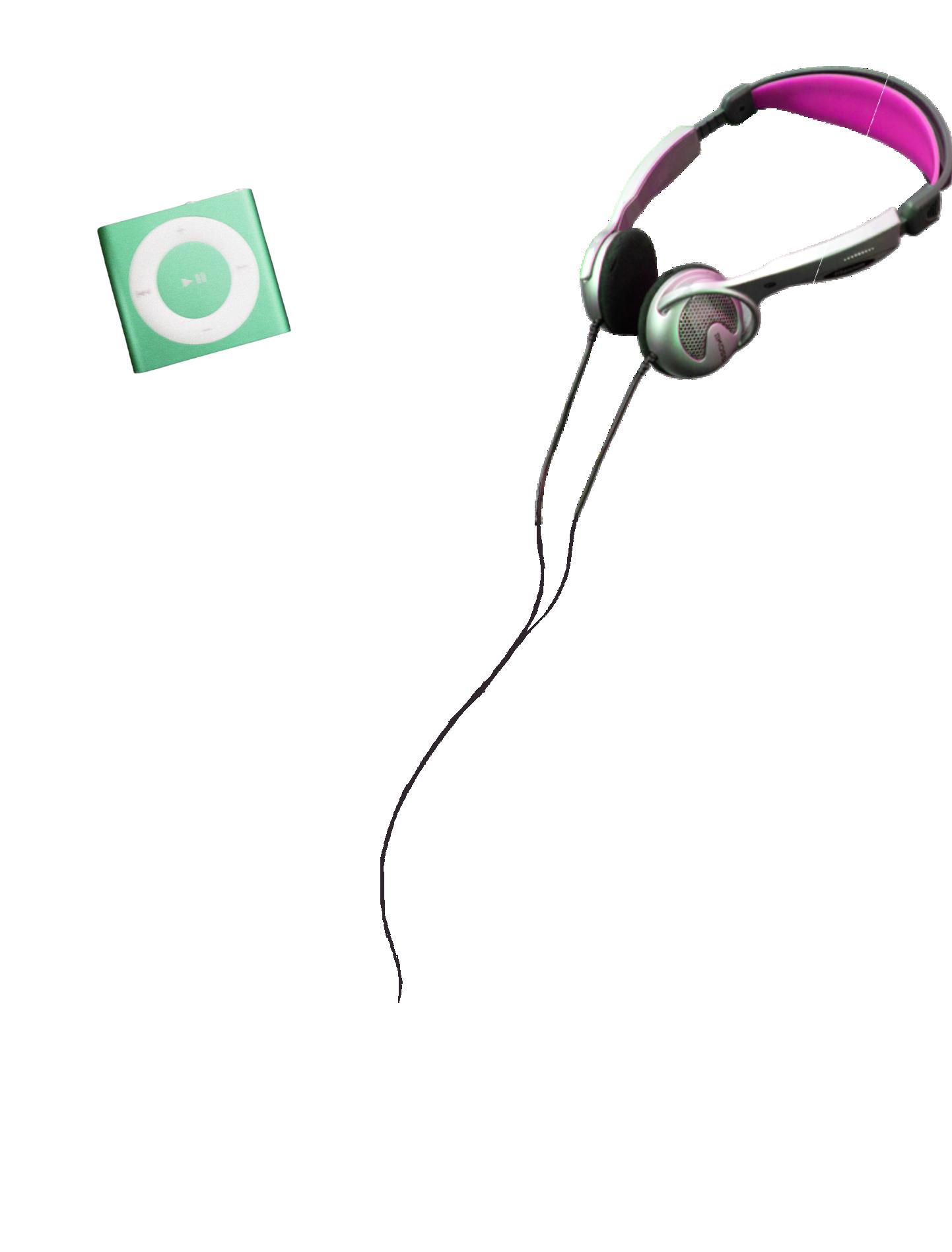
adian-Iranian multi-disciplinary artist based in Montreal. “She was also a woman who grew up in a setting where she wasn't allowed to pursue an education because of her gender. This oral storytelling was her way of preserving folklore and culture. It was also something that I wanted to pay homage to.”
Contes évanescents / Fading Fables / Zar-Afshun is the first phase of the project, and is currently on display at the Maison de la Culture de Rivière-des-Prairies.
The work was conceived during a
2022 residence at Ada X, a feminist artist-run centre engaged in media arts and digital culture. The installation features a recording of Sharifi’s grandmother recounting a fairy tale in Farsi alongside the artist’s animated illustrations.
According to Maison de la Culture’s cultural agent Marie-Louise Larocque, Sharifi’s project was chosen for her artistic approach and practice. The project explores themes of identity, women's resilience and the transmission of heritage between generations.
“The comments we received focused particularly on the virtual animation,” said Larocque. “[Visitors at the installation] were delighted to experience part of the exhibition in a new form (virtual reality), and were impressed by the immersion Naghmeh's universe brought them.”
The story told by Sharifi’s grandmother follows a girl similar to Cinderella. She lives a modest life when one day a snake visits her and drops a gold coin in front of her spindle. At first, she feels threatened by the snake and tries to get rid of him, only to discover that the snake is actually a prince. The prince is offended because he came to woo her only to be rejected.
“Because [the story] is part of the oral history, it has the additions of every person who's told the story at a different time,” Sharifi said.
Montreal-based sound designer Nick Lavigne produced the audio elements of the installation.
Lavigne had previously worked with Sharifi on The GraveSleepers, an animated short film which explores themes of mortality.
“It was challenging because I don’t speak Farsi,” said Lavigne. “I had the translation and I had an idea of what was going on, but it's definitely a different work experience to be putting in sounds against a narration or voiceover that you don't understand.”
Sharifi’s original idea was to preserve the story as it had no illustrations. She wanted to add visuals to the story but struggled to find references, documentation or other audio recordings of the older generations of Farsi women telling this exact same story. She didn’t know when the story had taken place so it became a fantastical image that lived in her head.
Sharifi explained that oral history is a valuable tradition. Like many women, Sharifi’s grandmother grew up in a male-dominated society.
“My grandmother and the women of her family, for example, didn't have access to education,” she said. “This gave them a sort of agency to preserve this part of the culture. Oral history is interesting because, through the generations that it’s passed down, everybody adds their own take and their own perspective with their own values. It’s transforming. It’s evolving in time.”
Sharifi grew up in Iran during the post-revolution era of the 1980s. She explained that during
Olivia Johnson

this time, female representation was being omitted from national media. This installation became a way for the artist to create the representation she hadn't seen in Iran.
She described the post-revolution Iranian media as “a systematic removal of female representation in children's TV programs and our national media.” If there was representation of women, they were heavily covered up and played very traditional gender roles. Only the privileged few there were able to acquire bootleg Disney VHS tapes.
“I didn't grow up seeing [female representation],” she said. “I wanted to give her a body, I wanted to give her a face, I wanted to give her a figure. I wanted her to be more than just the name. For me, creating this character, and the things that she's going through is creating that representation that I didn't see.”
Sharifi plans on producing a second phase of the installation which will use intergenerational dialogue to dive deeper into the topic of gender roles. Contes évanescents / Fading Fables / Zar-Afshun will be on display until March 30.


SPECIAL ISSUE • March 19, 2024 thelinknewspaper.ca 20
@24601ivia
FRINGE ARTS | THE SCIENCE & TECHNOLOGY ISSUE
COURTSEY NAGHMEH SHARIFI
Émilie Lussier’s triumphant rookie season
Her debut season highlights family support, adaptability and dreams of going pro
Zach Jutras @zach_jutras

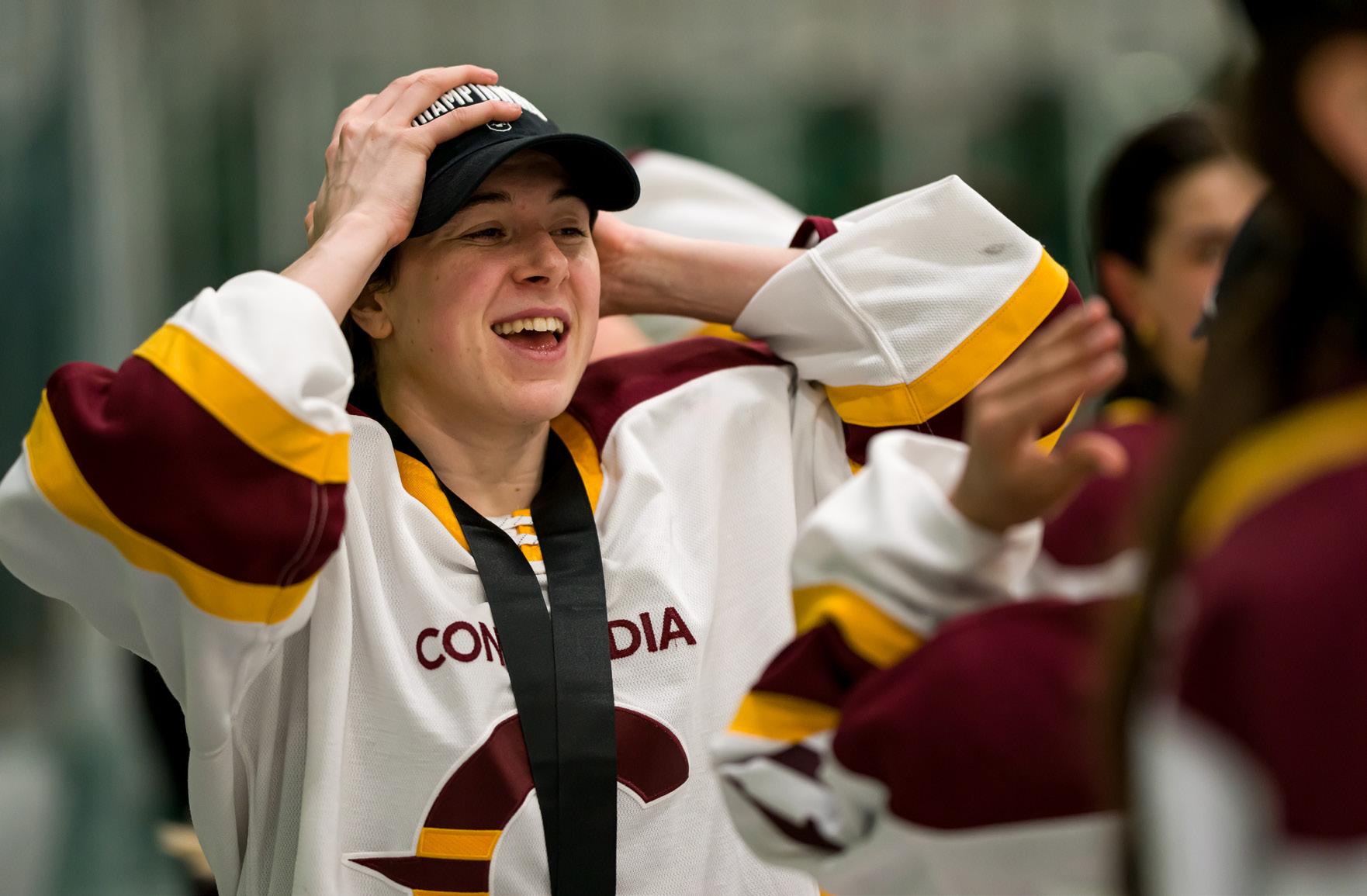
Émilie Lussier, a forward with the Stingers women’s hockey team, has had a debut season that would impress absolutely anyone.
The Concordia athlete ended the regular season in a four-way tie for second place as U Sports top goalscorer with 18 goals, and is U Sports’ fifth highest points leader with 34. She was Concordia’s female Athlete of the Week four times over the season, and Réseau du sport étudiant du Québec (RSEQ) Athlete of the Week once. She was selected to the Réseau du RSEQ first team All-Star and All-Rookie team. She was also named to the U Sports All-Rookie team and second All-Canadian team.
These accomplishments are dazzling, but Lussier remains humble. “It's always fun to get a mention like that, but at the end, everyone can be included, especially when you have a perfect season,” she said, referring to her team’s perfect 25-0 regular season.
Long before her start at Concordia, Lussier was taking the ice for the first time at four years old and began playing hockey competitively at six. Her childhood was surrounded by hockey, as both her mom and her older brother played. She grew up in arenas and set out to continue “the family trend,” according to her.
Family is a big part of Lussier’s journey. Her mom has never missed a match. She was there to witness every regular season game and the RSEQ
tournament, where Lussier and the stingers became RSEQ champions.
Lussier said her mom is her biggest supporter, and it seems she always has been. When Lussier was younger, it was her mom who drove her to every practice and every match. They would chat, and her mom would give her feedback. Lussier admitted that, “the higher my level, the less [feedback] she gives me” but they still have fun together.
As she was finishing her CEGEP diploma at John Abbott College, Lussier was scouted by many universities, but she ultimately chose Concordia. She said the major factor that swayed her choice was the coaching staff, referring to Olympians and head coaches Caroline Ouellette and Julie Chu. “It doesn't get any better than that,” she said.
Chu felt Lussier was a no-brainer when scouting players. “I think it was an easy scout to be able to see that Lussier was a top recruit coming out of Quebec or coming out of that graduating class, whether it's anywhere in North America. She was a tremendous player,” Chu said.
Lussier has loved every moment of being a Stinger. “It's a culture that's diverse, that's really positive, so it's really fun here. It's a really good environment. [The] Stingers are like a big family,” she said. As for learning from Olympians, she said that “they really show us their passion for hockey,
and we learn a lot from them.”
Before Concordia, her talents led her to Canada’s national women’s U18 team. On the national team, she represented Canada at the world championships in Slovakia. She called it a “oncein-a-lifetime” opportunity and one of her proudest moments.
Despite all the success, Lussier has faced her fair share of adversity. “There's no denying that throughout her career to date, she hasn't always had good times,” said Lussier’s mother, Marie-Josée Clément.
One of those bad times came two days after the U18 World Championships finals in January 2020, when she had to get surgery on her knee cap after it got dislocated. She was told her recovery would be a 12-month-long process. Lussier said to hear that, “was really hard mentally.”
It only got worse two months later when COVID-19 shut everything down. Her appointments were postponed, and it slowed down her recovery.
Clément recalled her daughter’s reaction: “It was the end of the world for her. She couldn't play hockey anymore, her career was over,” she said. “It was a lot of mental work, a lot of helping her, and then just cheering her up, telling her that, ‘No, it's going to be okay, you just have to take your time, let it heal, do the exercises properly and everything will come back.’”
With all the help from her family, Lussier was no longer thinking it was the end of her career. She tried to play her first season of college hockey despite the injury. “I was following the team everywhere because I was making an effort to come back during the season,” she said. “In the end, there were a few complications. I couldn't come back.” She may have missed her first college season, but she was able to come back strong. In her two seasons
with the John Abbott Islanders, she tallied 100 points in 51 games.
With the Islanders, Lussier and her team were back-to-back RSEQ collegiate champions, much like the Stingers at the university level. Knowing that about the Stingers didn’t add much pressure. For her, a winning team makes it easier. “Being part of a team that's already winning is really easy for us", she said.
Chu said Lussier has put in all the work to help the team in its success. “Every day she works. There's not a moment where I don't think she works hard. Whether it's on the ice, off the ice, or in games, she has brought a full effort,” she said.
As much as Lussier achieved this year, she said she wasn’t expecting any of it: “To be an incoming player, then to score so many points and win so many games, then to have an impact on the team, that's really fun.”
”She always remained humble. She always remained respectful towards her teammates, then with the whole team, she always said that it was the team first,” Clément added.
Lussier’s university career is just getting started, but when it does end she hopes to be off to the big leagues. Having a chance to play professionally and in the Olympics is her goal. However, for now, she is a Stinger and it is always team first All-Canadian.

SPORTS March 19, 2024 • SPORTS 21 thelinknewspaper.ca
ÉMILIE LUSSIER GETS HER GOLD MEDAL AT THE U SPORTS NATIONAL CHAMPIONSHIP ON MARCH 14 IN SASKATOON. PHOTO LIAM RICHARDS
ÉMILIE LUSSIER BATTLES AGAINST A GEE-GEES PLAYER. PHOTO YANN RIFFLARD
Sex Ed(itorial): The ideal gay body
Fatphobia and white supremacy in the queer community
Young, white, skinny: the twink has become the paradigm of the gay experience.
Typically characterized by a slim body, somewhat muscular but not too much, no body hair, a young appearance, and a feminine lilt, the twink has been commodified and set as the standard in the gay community.
The veneration and fetishization of twinks come at the expense of other bodies that do not fit the mold. So what does it mean for queer men who don’t have this body type?
Historically, gay men as a community have formed tribes— such as twinks, bears, otters and many others. This is to provide a quick gloss of how an individual will be as a romantic partner.
The twink, along with a certain body, is also associated with a set of behaviours. He is supposed
to be an effeminate bottom, emasculated and passive. On a dating or hookup app, self-identifying as a twink gives other users an idea of what they are going to get, but is constraining to that very image of the white skinny body.
Yet, the need for queer men to have a certain body to be a desirable romantic partner exists as a reflection of larger societal norms surrounding what we ought to find attractive.
The fat body, for instance, has become moralized and encoded with various assumptions of character. We assume a fat person is lazy, gluttonous and selfish. As these associations come to be signified by the fat body, to be attracted to someone with that sort of body becomes deviant or taboo, as to desire the fat body sends the message to others that you too are associated with these traits.
In the gay community, it has become a fixture to put in dating app profiles the phrase “no chubs” or “only into fit” to discourage messages from fat men. The twink, though not the only body that gay men strive for, tends to embody the most prevalent desires which are sought after by other men.
Prevalence of body dysmorphic disorder (BDD) symptoms is extremely high for gay men, with an article in the journal Body Image citing as high as 49.3 per cent of male sexual minority study participants experiencing symptoms of BDD.
Being skinny and chiseled, along with the need to advertise oneself on queer dating apps, have pressured gay men into developing a critical position towards their bodies to the level of pathology.
The twink’s proximity to
whiteness is also worrying. Queer men of colour feel alienated by the prevalence of solely white images of queerness. As racialized bodies are not the default white body, race takes precedence over any sort of self-association with a tribe. Along with the demonization of the fat body, the racialized body exists in a similar state, either exoticized or denigrated. We must advocate for more realistic and inclusive body standards for queer men. Ultimately, these
problems surrounding the ideal body in the queer community stem from our societal perception of fat bodies as undesirable and unworthy of recognition writ large, not just within LGBTQIA2S+ spaces alone.
As queer men, already forced to question our sexuality constantly, it is a shame that we continue to perpetuate heteronormative and colonial beauty standards. We must continue to question why we place certain bodies above others.
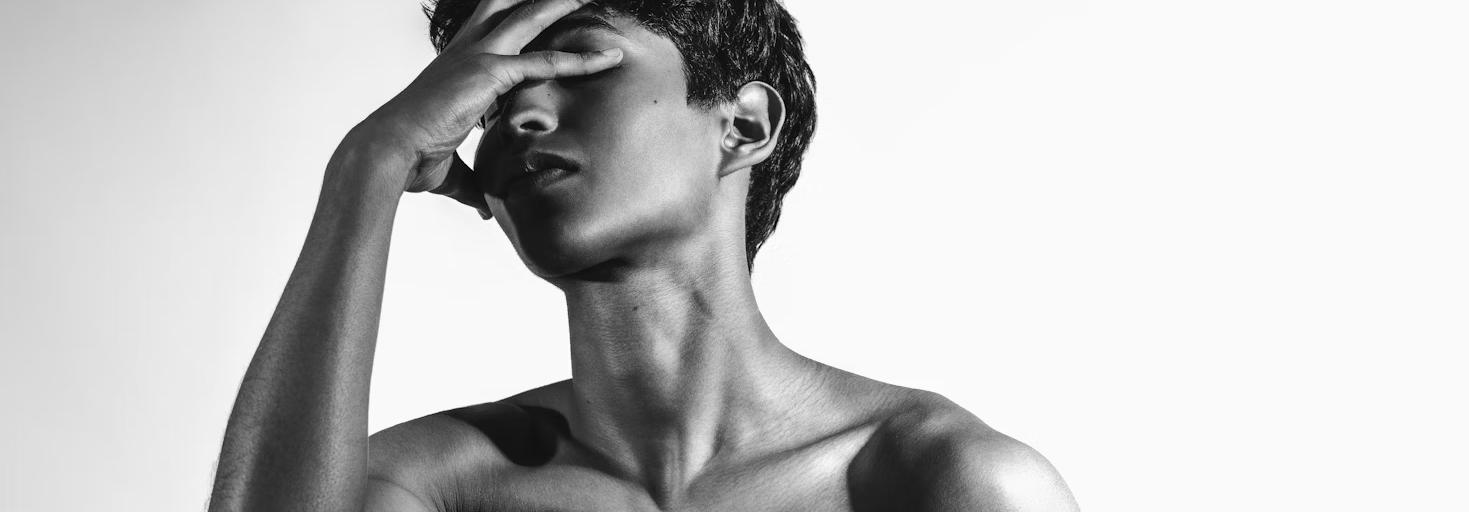
Sex Ed(itorial): What’s your body count?
TikTok misogyny and the demonization of women’s sexual freedom

On tiktok, it seems that a lot of Gen Z’s sexual discourse revolves around body counts
The phrase itself originates from military terminology, usually referring to the number of enemy troops killed.
Now, it refers to the number of sexual partners one has had, a testament to the dynamics of violence and domination that inform our views of sexuality.
This heteronormative obsession with someone’s body count is harmful to Gen Z’s sexual health.
Most people consider vaginal penetrative sex to be the sole measure for body counts. This excludes oral and manual sex, relegating them to the twilight zone of “not-real-sex.”
Following this logic means that a lesbian couple could not
have “real sex” unless (phallic) penetration is involved.
There shouldn't be a difference between if someone has had sex with 20 people instead of six.
Unfortunately, for most people, it’s a pretty big difference.
Generally, people want to be with a partner who’s sexually experienced, but not too much.
Since it’s hard to actually figure out how sexually experienced someone is without engaging with them sexually, people use the body count as a proxy for sexual experience.
However, a body count does not really measure someone’s sexual experience as you can gain plenty of experience by having sex with the same person over and over.
A lot of the discourse regarding body count stems from insecurity.
There are those who are worried that they can’t satisfy someone who has a lot of experience. There’s also the fear that a highly experienced sex partner will find sex less special. On the other end, some worry that having too high of a body count will lead to prospective partners judging them.
There is also the double standard surrounding sexual activity and gender; the man who sleeps with many women is a stud but the woman who sleeps with many men is a slut. This double standard is not just a product of popular culture, but is measurable.
The sexual double standard (SDS) and its slutshaming isn’t just a modern phenomenon associated with reactionary views regarding women’s liberation.
It’s actually a showcase of the western cultures' very rigid gender roles, dating back to the Ancient Greeks. For example, mythological hero Heracles was known for his body count, on the battlefield and in bed.
Our gender and sexual norms dictate that men should pursue sex, but only with women. At the same time, women must remain chaste. And if they choose to have sex with other women, it’s not real sex anyway.
Restrictions on sexual openness emerged at the same time as patriarchal societies began to develop across the world.
A man seeking to pass on his property to his children wants to make sure that his children are genetically his.
The easiest way to do this is to restrict his wife’s ability to have sex. This restriction doesn’t apply to men, who are given the patriarchal power of choosing to whom they pass on their private property. Thus, the sexual double standard is born, and enforced post-hoc by religious explanations and cultural justifications.
As we try to move past the restrictions of patriarchy, we find ourselves limited by strict gender norms. These norms hurt us and fuel our insecurity about sex. This insecurity can even manifest itself in the form of full-blown arguments between partners.
While feminists and pro-sex activists have been working to destigmatize sex and body counts, other less sex-positive figures have cropped up.
Gen Z has heard messages reinforcing traditional—sexist and heteronormative—views of sexuality.
“A lot of the world’s problems could be fixed if women walked around with their body count on their foreheads” is what former kickboxer turned misogynistic internet celebrity Andrew Tate had to say on the topic.
Despite supposedly being canceled and deplatformed more than a year ago, he remains active on social media.
Video clips of him regularly go viral, amassing millions of views, many of them by impressionable young men.
Sex positive messages rarely have the same reach as restrictive messages. Insecurity and strong cultural norms make us all more receptive to anti-sex messages and the rise of the internet allows those messages to spread like wildfire.
The obstacles we have to climb are not insurmountable.
We Gen Zers need to critically examine the messages that we see in the media regarding sexuality. We have to understand that these messages promote a vision of sexuality that is heteronormative and that disproportionately harms women.
OPINIONS 22 OPINIONS • March 19, 2024 thelinknewspaper.ca
Antony Monir
Nelson Graves
GRAPHIC ZACHARY FORTIER
COURTESY DIEGO SÁNCHEZ
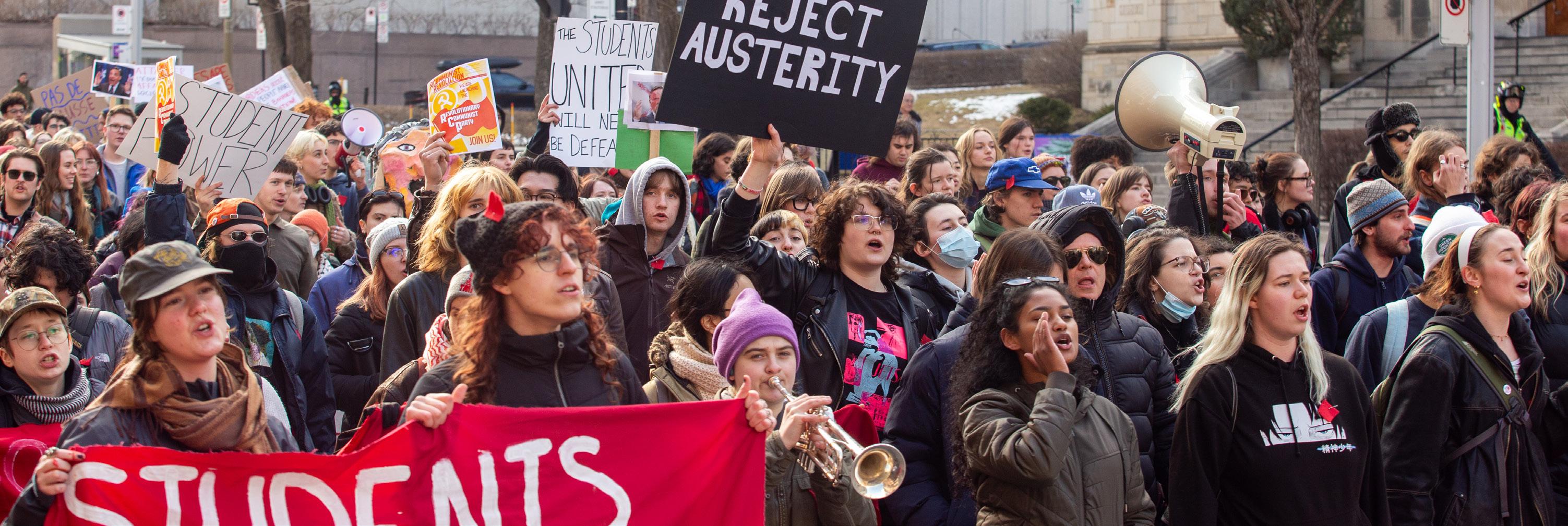 PHOTO ALICE MARTIN
PHOTO ALICE MARTIN
A bone to pick with tuition strike scabs
In October 2023, Quebec Premier François Legault and Minister of Higher Education Pascale Déry announced out-of-province and international students attending anglophone universities would have to pay significantly higher tuition.
Enraged by the government’s austerity, disregard for anglophone students and racially charged political decisions, students took matters into their own hands for the second time in the academic year. Student associations held general assemblies and asked students to vote on their departments going on strike.
From March 11 to March 15, over 22,000 students at Concordia University went on strike. Throughout the week, students were mobilized, picketed classrooms and protested in front of Legault’s Montreal office.
Although hundreds of students were on the front line enforcing the strikes, dozens of pro-
fessors and students who wished to attend their classes crossed the picket line. During several instances, striking students were verbally and physically harassed as well as having security called on them by students and professors who refused to stand in solidarity.
A few talking points that often arose as students picketed were “This isn’t going to change anything,” or “I’m here to take my class and graduate, I don't care about anything else.”
Herein lies the problem. Students and professors are neglecting how damaging these increases will be to everyone, not only future students at Concordia. Approaching bureaucratic attacks on education in a hyper-individualized manner will never solve our problems.
Community action has led to so many positive changes in Quebec society, and tuition is a prime example. One of the only reasons Quebec has some of the lowest uni-
versity tuition rates across Canada is due to students actively speaking out, striking and holding the provincial government accountable.
We are already seeing the signs of a bleaker university space. Classes are being cut and enrollment is down by 27 per cent. This means that crucial student-run services will have to either shut down or find ways to survive on a shrunken budget, which comes directly from student fees. Services like the Advocacy Centre, the Legal Information Clinic, The Link, the People’s Potato, Le Frigo Vert, and many more.
The university’s administration has also not been accommodating. Instead of trying to help students, the administration has done everything in its power to sabotage picketers. According to university employees who spoke to The Link under anonymity, Concordia sent out emails to the chairs of each department, de-
manding professors not cancel class. Due to these emails, a number of professors still held class in person or tried to move them online. This led to a number of professors scabbing.
If the university administration actually cared for its students and their academic integrity, it would allow professors to cancel classes in solidarity. Concordia is not blind to the government’s anti-anglophone and anti-immigrant agenda. While reminding professors not to cancel classes, Concordia is in the midst of suing the government for the tuition hikes.
On Feb. 23, Concordia President Graham Carr announced that the university is set to take legal action against the province. This is after months of discussions between the university and the government. Carr cited reasons such as “equality among francophone and anglophone linguistic
groups and the protection of Quebec's minority English-language community,” per his statement.
Although The Link supports the university’s decision, we encourage the administration to use a more student-centric approach and not view the university strictly as a business.
The Link condemns all students and professors who broke pickets and harassed students.
No class is worth harassing those fighting for collective justice.
The government’s decision to price-gouge out-of-province and international students shouldn’t be tolerated, especially under the pretence of “protecting French.” If that was the government’s main concern, it would allow international students from non-European French-speaking countries to pay lower fees, like their French, Belgian and Swiss counterparts. The fight for accessible education requires everyone’s support.
Editor-in-Chief
ZACHARY FORTIER
Volume 44, Issue 12
Tuesday, March 19, 2024
Concordia University Library Building, Room LB-717
1400 de Maisonneuve Blvd. W. Montreal, Quebec H3G 2V8
Editor: 514-848-2424 x. 7407
Arts: 514-848-2424 x. 5813
News: 514-848-2424 x. 8682
Business: 514-848-7406
Advertising: 514-848-7406
TheLinkis published thirteen times during the academic year by TheLinkPublication Society Inc. Content is independent of the university and student associations (ECA, CASA, ASFA, FASA, CSU). Editorial policy is set by an elected board as provided for in TheLink's constitution. Any student is welcome to work on TheLinkand become a voting staff member. Material appearing in TheLinkmay not be reproduced without prior written permision from TheLink . Letters to the editor are welcome. All letters 400 words or less will be printed, space permitting. The letters deadline is Friday at 4:00 p.m. TheLinkreserves the right to edit letters for clarity and length and refuse those deemed racist, sexist, homophobic, xenophobic, libellous or otherwise contrary to TheLink's statement of principles.
BOARD OF DIRECTORS
2023-2024: Voting Members: Caroline Marsh, Jordan McKay, Menna Nayel | Non-Voting Members: Adam Gibbard, Zachary Fortier
TYPESETTING by The Link PRINTING by Hebdo-Litho.
CONTRIBUTORS: Fern Clair, Naomi Flis, Ashley Gauthier, Tuza Dulcinée, Tshimanga M., Cate Gransaull, Olivia Steer, Matthew Daldalian, Jude M., Safa Hachi, Hannah Scott-Talib, Max Moller, Mathilde Colls, Fatima Khan, Elmira Ayatizadeh, Gaspard Beaudoin, Leo Litke, Sara Salsabili, Anaïssa Dauphin, Julia Cieri, Elena Meyer, Olivia Johnson, Zach Jutras, Yann Rifflard, Nelson Graves, Antony Monir.
House Ads: Adam Gibbard
Covers and Poster: Tuza Dulcinée, Panos Michalakopoulos, Myriam Ouazzani, Meiji Grace Estrada
Corrections for Vol. 44, Issue 11:
The article “Student kicked off campus for peaceful protest” on p. 4 was retracted in its entirety online. The Link promptly launched the investigation after it was brought to our attention that one of the subjects interviewed in the article has publicly endorsed ideologies that directly contradict the inclusive and respectful discourse we strive to promote. We extend our sincerest apologies to our readers. This incident does not represent the quality of journalism we aim to deliver, nor does it embody our dedication to uplifting marginalized communities.
Managing Editor
Coordinating Editor
Creative Director
Co-News Editors
Features Editor
Outreach Coordinator
Fringe Arts Editor
Sports Editor
Opinions Editor
Photo Editor
Video Editor Graphics Editor Copy Editor Operations Manager Systems Administrator
Bookkeeper Distribution
AUTUMN DAREY
OPEN
MEIJI GRACE ESTRADA
MARIA CHOLAKOVA
INESS RIFAY
HANNAH VOGAN
PANOS MICHALAKOPOULOS
GABRIELLE LAPERRIÈRE-LEBLANC
ALICE MARTIN
ANTHONY ISSA
DOROTHY MOMBRUN
DANA HACHWA
MYRIAM OUAZZANI
CONOR TOMALTY
ADAM GIBBARD
SHREYA SAVANT
MIKE TALAMANTES
GUY LANDRY
EDITORIAL thelinknewspaper.ca March 5, 2024 • EDITORIAL 23









































 Issa
Issa
 AI GENERATED GRAPHIC DALL-E
AI GENERATED GRAPHIC DALL-E





 PHOTO JULIA CIERI
PHOTO JULIA CIERI











 PHOTO ALICE MARTIN
PHOTO ALICE MARTIN
